

Mother Goose
Head Supervisor
Speculative Bible
Fay Wilde


Script Breakdown
Act Scene Location Characters Summary
Prologue Gooseland Frontcloth Discordo, Fortuna, Discordo’s Acolyte, Fortuna’s Acolyte
Discordo and Fortuna meet and fight. The two set a trial, if Discordo can find a human as selfish and mean as him he’ll get his powers back. They pick Mother Goose. The two transform into Lord de Fois Gras and Hattie to blend amongst the humans and help or hinder Mother Goose.
Costume Notes
The acolyte’s costumes match their respective master Discordo transforms into Lord de Fois Gras Fortuna transforms into Hattie
Other Notes
Fortuna has a wand Discordo has a staff

1 1 Outside Mother Goose’s House
Lord de Fois Gras, Hattie, Mother Goose, Gretchen, Squire Dither, Colin, Flower Seller, Goslings, Priscilla
All sing about being poor but good people. We are introduced to Gretchen and Colin, the two are in love.
Mother Goose is introduced, she’s down on her luck. She interacts with the audience. Lord de Fois Gras comes onto stage and the two interact. Hattie and Priscilla comes onto stage, Hattie offers to help Mother Goose out with
Mother Goose costume 1 Colin gives Gretchen a book
2 Outside Squire
Dither’s House
3 Inside Mother Goose’s House
Lord de Fois
Gras, Squire
Dither, Pull, Push
her geese, Mother Goose accepts. Colin, Gretchen and the Goslings come back on stage, the Goslings and Priscilla leave together. Colin and Gretchen have a moment together.
Squire, Pull and Push are talking about wether Squire should marry Mother Goose as both are poor. Lord de Fois Gras comes onto the stage and tells the trio that Mother Goose is now rich and Squire goes off to propose to her.
Lord de Fois
Gras, Hattie, Mother Goose, Gretchen, Squire
Dither, Colin, Priscilla, Pull, Push, Goslings

Priscilla lays a golden egg. Mother Goose, Gretchen, Hattie and Goslings sing about having money. Colin arrives and tells Mother Goose that Squire is on his way. Mother Goose tells him about being rich and the two sing about being in love. Lord de Fois Gras comes
4 Outside Squire
Dither’s House
onto stage convinces Mother Goose to keep the golden egg all to herself and she sends the Squire away.

5 Inside Mother Goose’s House
Lord de Fois
Gras, Squire
Dither, Colin, Pull, Push
Hattie, Mother Goose, Gretchen, Squire
Dither, Colin, Priscilla, Goslings
Colin and the Squire mope about the fact that they’re bad at confessing their love. They proceed to sing about this. Lord de Fois Gras convinces the Squire to try again with Mother Goose in an attempt to draw the two further apart.
Everyone in the Goose household is unhappy but Hattie attempts to keep everyone’s spirits up. Mother Goose comes in and demands that Priscilla lay more eggs, she sings about being rich. Colin comes over to teach Gretchen English but Mother Goose stops him. The two argue. Squire comes over to propose to Mother Goose
Mother Goose Costume 2
6 Gooseland Frontcloth / Pool of Beauty
Discordo, Lord de Fois Gras, Mother Goose, Colin, Discordo’s Acolyte, Fortuna’s Acolyte
again, she denies him. Everyone tells Mother Goose that her behaviour and attitude have made her ugly. Mother Goose starts to rethink her choices.
Discordo and Fortuna argue abou the first trial. The two transform to their human personas.
Mother Goose appears and Lord de Fois Gras talks to her. She tells the Lord that her friends think she's ugly and she’s rethinking her actions.
Lord de Fois convinces her to instead step into the pool of beauty. Mother Goose pays to use it with Priscilla. Mother Goose sings Vogue
Discordo changes into Lord de Fois Gras Fortuna changes into Hattie
Mother Goose has a quick change after stepping into the pool of beauty –Mother Goose costume 3

2 1 Inside Mother Goose’s House Hattie, Mother Goose, Gretchen, Squire Dither, Colin, Goslings
Hattie, Gretchen and the Goslings sing how terrible their life has gotten thanks to Mother Goose. Mother Goose enters and orders the other
Mother Goose Costume 4
2 Gooseland Frontcloth Discordo, Mother Goose, Priscilla, Discordo’s Acolyte
characters around. Colin shows up and insults Mother Goose. He tells her that the Squire is outside, she lets the Squire in.
Mother Goose then sings about how beautiful she’s become. Squire leaves her because he thinks she’s changed.
Everyone but Hattie and Mother Goose leaves the stage. Mother Goose cries over the fact that everyone has left her, Hattie convinces her to be kind and generous again and to go get Priscilla back. The two head off.
Discordo celebrates over winning the trials. He sings about he’s going to eat Priscilla. He leaves his Christmas list and leaves the stage.

Mother Goose comes onto stage, looking for Priscilla, and
Discordo leaves his Christmas list on the stage.
3 Outside Squire
Dither’s House Fortuna, Hattie, Mother Goose, Gretchen, Squire
Dither, Colin, Fortuna’s Acolyte
find the list, she then does who’s here today and birthdays with the audience.

4 Discordo’s Cave Discordo, Hattie, Mother Goose, Gretchen, Squire
Dither, Colin, Priscilla, Demons
Colin and Gretchen argue about going back to Mother Goose. The two then sing about being in love. Mother Goose and the Squire come on stage and Mother Goose convinces the trio to help her find Priscilla. Hattie comes on stage and fills everyone with hope. She then changes to Fortuna. All characters sing about walking together.
Discordo celebrates winning with a chained up Priscilla. He sends off his gaggle of demons to make sure he is not interrupted with cooking the goose. Colin, Gretchen and Squire come on stage one by one and are captured by demons. Mother
Hattie changes to Fortuna
Fortuna is Hattie again
5 Outside Mother Goose’s House Discordo, Hattie, Fortuna, Mother Goose, Gretchen, Squire Dither, Colin, Priscilla, Discordo’s Acolyte, Fortuna’s Acolyte, Goslings
Goose comes on stage and defeats the demons. Discordo comes onto stage and the two fight. Discordo is then pursued on and off stage by Colin, Gretchen, Squire, and Mother Goose. Priscilla is freed by Hattie and leaves the stage. Discordo is chained up.
Hattie and Priscilla arrive back at the Goose house.
Priscilla dances and Hattie leaves the stage. The others arrive at the Goose house. Fortuna also arrives on stage. Discordo is denied his magic by the audience.
Priscilla lays another golden egg. Colin proposes to Gretchen, she says yes. Mother Goose proposes to the Squire, he says yes.
Hattie to Fortuna quickchanage

6 Frontcloth Gretchen, Colin Gretchen and Colin have a sing-along with the audience.
Quickchanges to wedding costumes
7 Walkdown Discordo, Fortuna, Mother Goose, Gretchen, Squire
Dither, Colin, Priscilla, Discordo’s Acolyte, Fortuna’s Acolyte, Goslings
Entire cast sing Can’t buy me love. Bows.
Gretchen and Colin wedding quickchnage.


Costume Plot







Primary Research
Review of Snow White

During the Christmas season of 2024 I went to go see a Saturday matinee show of Snow White at the New Theatre Royal Lincoln. Overall I enjoyed the show but found the production, set and costumes mostly lacking Most of the costumes overall were consistent, with characters wearing the same thing for a majority of their scenes, including the Dame.
Nurse Nelly
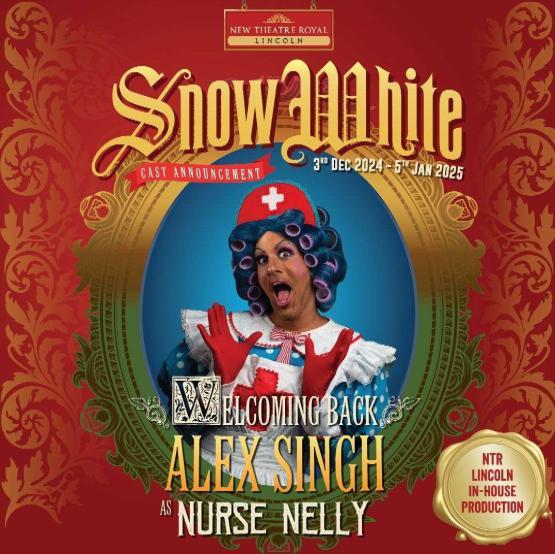

Nurse Nelly is the Dame of this production, played by Alex Singh. I felt that Singh’s performance was average, and he was enjoyable. Singh’s costumes stayed the same for most of the production, with the nurse costume. The costume is bright and eye-catching and has a recognisable pattern that can be seen across the theatre, and having the costume be so allows for younger audiences to recognise and remember the dame as a character. However, overall, I was unimpressed with the Dame costume and its lack of variety, and if I were able to be involved in a pantomime such as this, I would have pushed for a wider variety of costumes and wigs.
Fig 2: Cast Announcement of Nurse Nelly
Fig 1: Snow White Press Launch
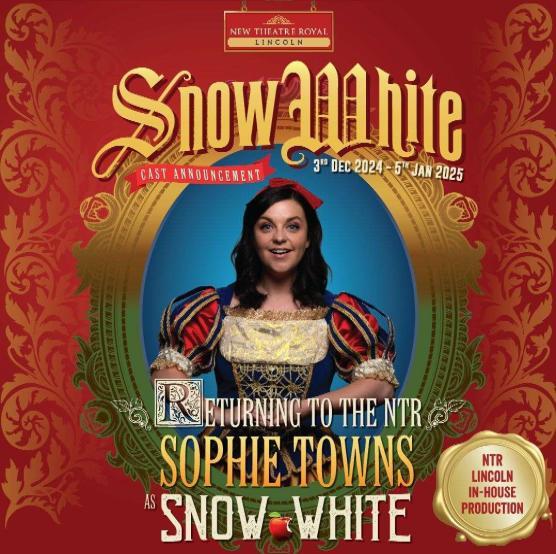
Snow White is the leading lady of this production, played by Sophie Towns. Towns’ performance was one of the better parts of the panto, being upbeat and charming. Embodying the leading lady. Towns’ costume was easily recognisable as Snow White and had added trip and had yellow fabric panels of the bodice and skirt to elevate it from a basic store-bought Snow White costume. This costume stayed the same up until the end wedding scene, in which she changed into a silver version of her original costume. Keeping the silhouette the same, making her recognisable to younger audiences.
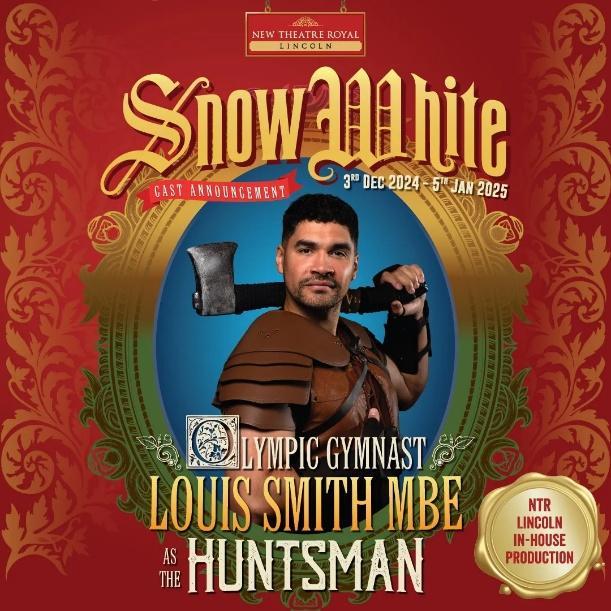

The Huntsman is the leading man of this production, played by Louis Smith MBE. I found Smith unimpressive and his performance wooden. Smith is an Olympic gymnast, and I feel how acrobatic abilities were underutilised, with Smith performing a simple roll and not much else. Smith’s costume was quite simple with a black shirt and trousers with a light leather chest plate and stays unchanged for the entire show. Smith’s role was as the macho love interest, but I found him boring and not charming.
The Huntsman
Fig 3: Cast Announcement of Snow White
Fig 4: Cast Announcement of The Huntsman
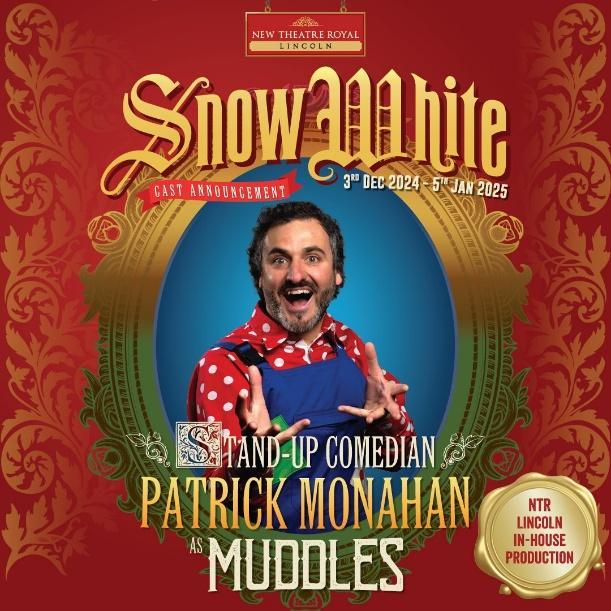

Muddles is the comic relief of this production, played by Patrick Monahan. I enjoyed his performance but feel that some of the scenes dragged on and his comedic style began to grate a bit. Monahan’s costume stayed the same for the entire show. I found it quite simple, with its shirt and dungarees, but the matching colour of red and blue, along with the polka dot pattern, helps the audience connect him with Nurse Nelly, who is his mother. I feel overall that he was one of the better performances of the show.
Fairy Forget-Me-Not
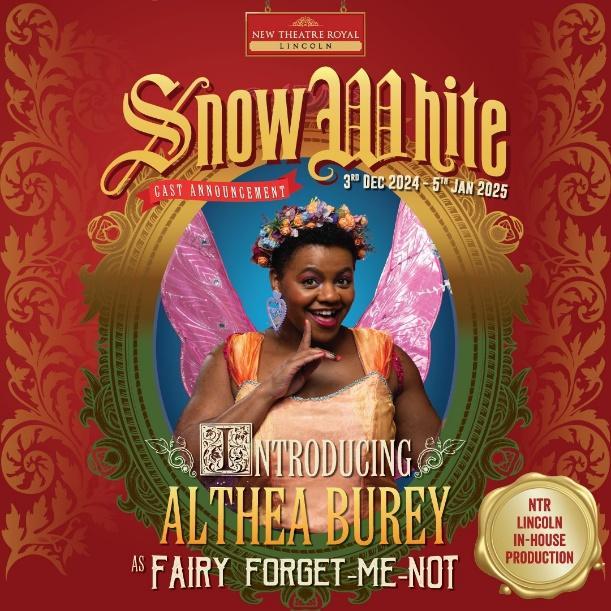
Fairy Forget-Me-Not is the good fair of this production, played by Althea Burey. I enjoyed Burey’s performance but found her average overall. I liked Burey’s costume with bright colours and light fabrics, along with pink fairy wings. Burey is the complete opposite of Lily’s character, with The Evil Queen being weighed down by her costume, while Fairy Forget-Me-Not is lifted up by hers.
Fig 5: Cast Announcement of Muddles
Fig 6: Cast Announcement of Fairy Forget-Me-Not
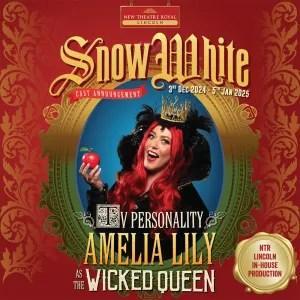

The Wicked Queen is the villain of this production, played by Amelia Lily. I found Lily’s performance boring and didn’t enjoy it at all. Lily’s costume was made up of black fur and feathers, which made her very easy to associate with evil and villainy. As well as this, her cape was good for dramatic movements, allowing her slink around and across the stage.
Fig 7: Cast Announcement of The Evil Queen
Threading an Overlocker
In my last unit I learnt how to thread an overlocker. I found this process much less complicated than I feared it would be, and I feel that knowing this process will aid me in the future.
I have been given a paper guide in case I forget the process. Most overlockers will also have a visual guide on the inside of the metal flap covering the threading mechanics of the machine.

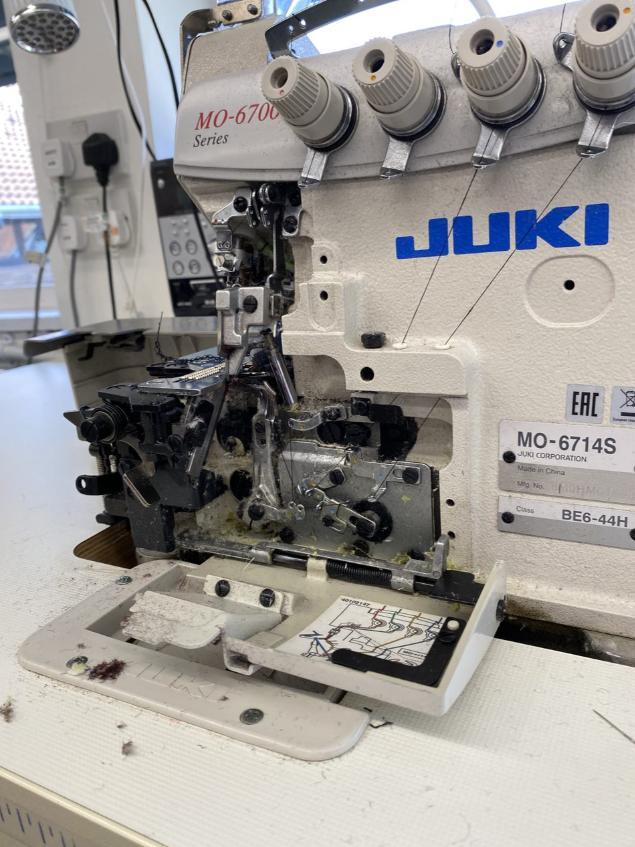
When it comes to threading, or re-threading, an overlocker you start by lifting the plastic shield near the needles of the machine and lifting the presser foot away and back from the feed dogs. Next you open the front metal flap to the right and down, revealing the threading mechanics of the machine. If the overlocker is pre-threaded, separate the leftover threads to make re-threading easier.
Then, starting right to left, thread the overlocker, following the coloured dots of the body of the machine, starting from the top of the machine and following to the tension discs, making sure thread goes through the discs, rather than behind. Then, using a pair of tweezers, thread the lower half of the machine, once again following the coloured dots. Finally, when the machine is fully threaded, replace the presser back in to place, making sure threads are caught under the foot. Replace the plastic shield and the metallic flap. Run the machine, to make sure the threads join, and start overlocking your chosen fabric.
Fig 8: Threading Mechanics of an Overlocker
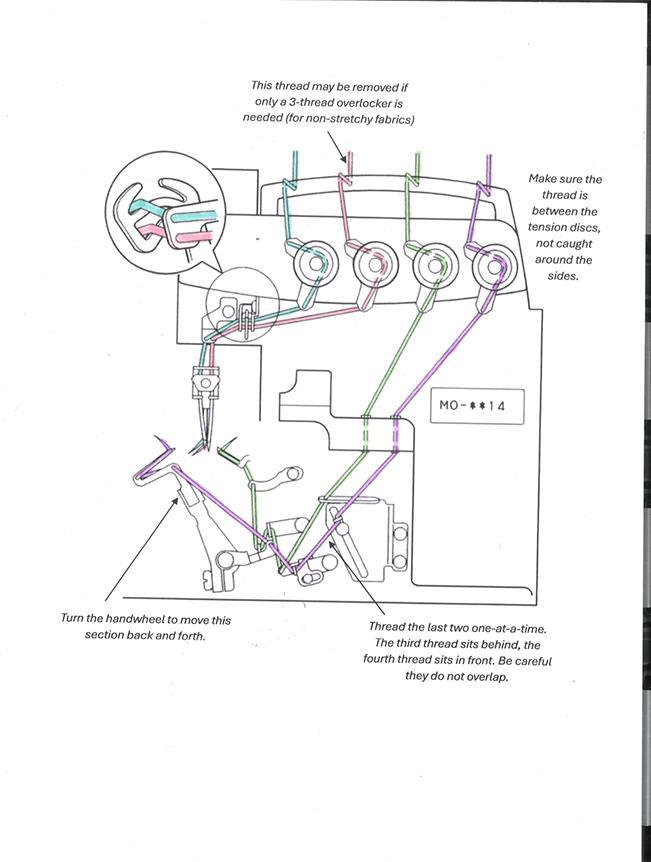

Fig 9: Paper Guide for Threading an Overlocker

Secondary Research
A History of Pantomime
For this unit, I am doing a speculative project on the pantomime “Mother Goose”, so I am researching the history of pantomime.
Pantomime is a comedy-based musical show developed in England during the 17th century. Panto is particularly popular during the Christmas and New Year season.

The word pantomime was taken from the Latin word pantomimus, which in turn was taken from the Greek word pantomimos, παντόμιμος, which is made up of the word panto, παντο, which means all, and mimos, μῖμος, which means dancer; meaning a dancer who acted all the roles or all of the story.
Roman pantomime was based mainly on Greek tragedy and though not much is known of Roman pantomime it was said to be known for it’s erotic content and feminine dancing. It was usually a solo male dancer accompanied by a singer or chorus, who sang the story for the dancer to act out with the use of masks and recognisable poses and gestures. Pantomime was different from mime as it was considered more artistic and didn’t use lowbrow humour, though such humour was not unseen from Roman pantomime. While it had started out as a form of education for the upper class it began to gain popularity at the end of the first century BC amongst the lower classes, slaves and freemen as it was so accessible as it could be understood without needing to be read and did more to teach the myths and legends than any of the other artistic mediums at that time. As it was considered a lower form of entertainment, it was not looked into historically until the 20th century, where it went on to influence European concert dance and inspired ballet, transforming it from mere entertainment to actual performance as dancers began to add technical challenge in ballet d’action.
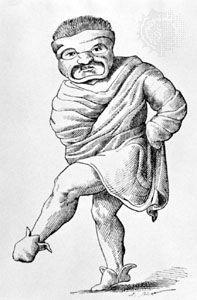
British pantomime actually has its roots from the Italian Commedia dell’Arte , which is entertainment from the 16th century. It used dance, music, tumbling and acrobatics, and always included the same stock characters for each performance, making each show accessible and easy to follow along for the audience. There were four different groups of stock characters, Zanni, which was made up of servant, clowns and tricksters, Innamorati, which were the young lovers, Vecchi, made up of the wealthy old men and masters, and Il Capitano, which were the self-styled captains and braggarts.
Fig 10: Engraving of Ancient Rome Pantomimus
Most of the characters were represented by masks and with those masks came characteristics, making the character what it is. Female characters are almost never masked and the lead female, the Prima Donna, is never masked. There are characters more popular than others.
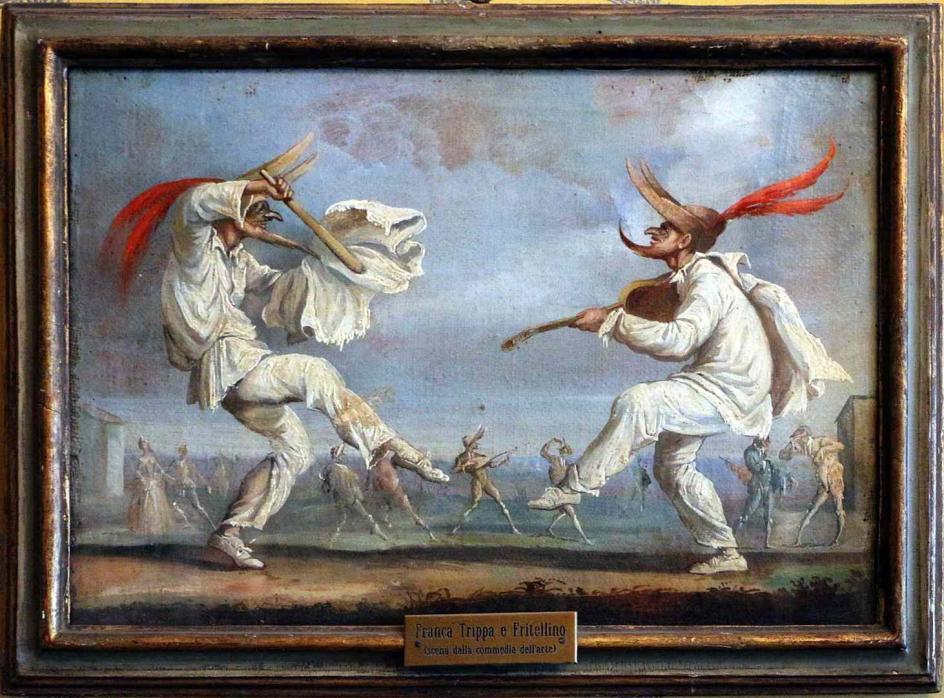
As Commedia dell’Arte rose in popularity, it began to be performed outside of Italy, spreading across Europe, and eventually began performances in London by the 18th century. Harlequin, a servant in the Zanni group, rose to popularity during this time, so much so that a show was written for him by John Rich, one of the most notable Harlequin actors, called Harlequinade. It involved a chase scene telling the story of the lovers Harlequin and Columbine, the two are kept apart by the girl’s father, Pantaloon and his servant Clown. Harlequinades quickly became popular and remained so for around 100 years.
John Rich’s Harlequin created the term slapstick, of which came from a wooden bat he used to change the scenery by hitting down a series of hinged flaps.

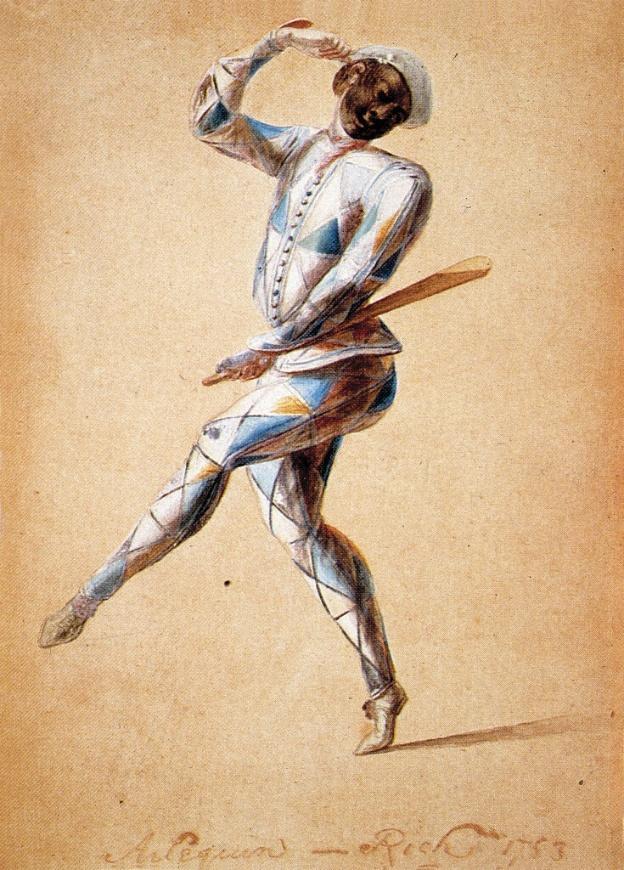
Fig 12: John Rich as The Harlequin - 1753
Fig 11: Museo del Teatro alla Scala painted in Milan
Meanwhile, at the same time, David Garrick was wowing audiences with a speaking Harlequin. Up to this point pantomime had still been dancing and miming to music. Garrick also hired Rich’s pupil Henry Woodward to create new stories for him and also began incorporating old English folk tales, such as Dick Whittington, Robin Hood and the Children of the Wood. From this, pantomime began to evolve and more English folk tales and topical satire pieces replaced classic Italian tales.
As well as this, after Joseph Grimaldi’s performances of Clown in Mother Goose in 1806 were such a hit, Clown began to be more popular over Harlequin.

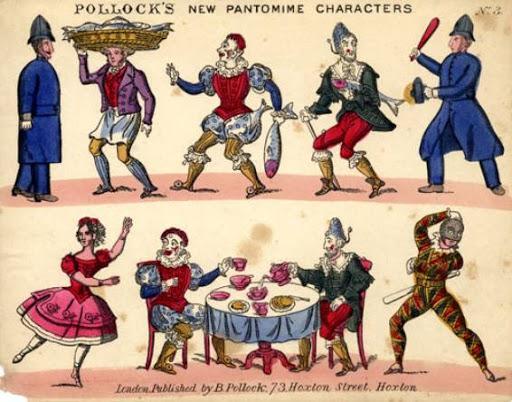
Up until 1843 theatre licensing had restricted the use of word in performances of theatres without a royal patent, but the Theatres Act changed this and non-patented theatres were able add in puns, word play and audience participation to their mime. This also allowed for the inclusion of the use of fairy-tale characters, magical characters, and pantomime dames to be mixed in with comments on current events and social satire.
By the end of the 19th century pantomimes had further grown, extravagance being the main goal, with performances lasting up to five hours with extensive costumes, sets and staging, and huge casts. As well as this it became customary for pantomimes to open on boxing day, fully cementing pantos with Christmas time. Pantomime also became popular with families and friends, performing Toy Theatre versions of abridged scripts with cardboard characters.
During this time, gender-switching of roles started to become more common in pantomime. One of the first gender-switched roles was actress Lucy Eliza Vestris playing a male role in Puss in Boots in 1837. During this era, seeing women in breeches and tights was considered risque, and theatres and music halls took advantage of the controversy to draw in audiences, and by the end of the 19th century, women as principal boys was commonplace.
Fig 13: Pollock’s toy pantomime
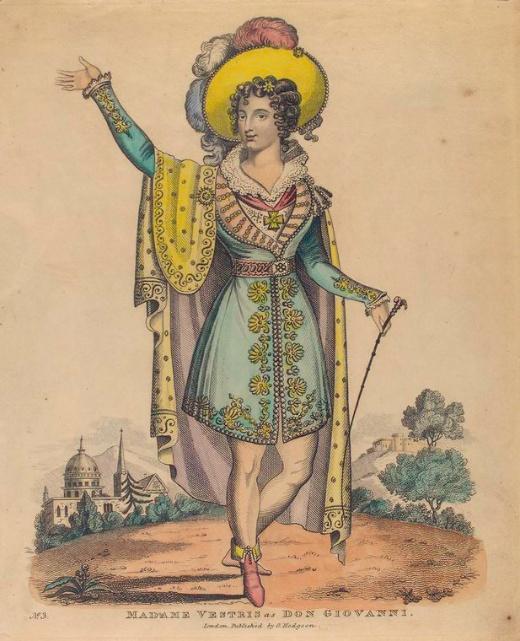

While women playing gender-switched roles had only recently come to be, men playing gender-switched roles had been common since 1350 as women were banned from the stage at that time, up until 1650 when King Charles II lifted the ban. Pantomime carried over this trend, having actor Samuel Simmons playing Mother Goose in 1806. While actresses who played gender-switched roles leaned in the masculine characteristics of the role provided to them, the fact that the actor playing the gender-switched role was male was apart of the joke. In 1861 Henry J. Byron wrote the role of Widow Twanky for Aladdin, named after Twanky Tea a lower quality tea brand imported from China.
Dames continued to be popular characters in pantos as time went on.
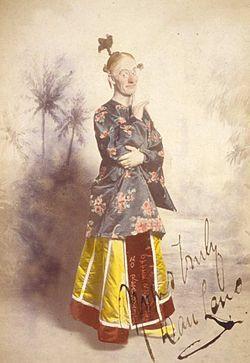
Fig 14: Lucy Eliza Vestris as Don Giovanni
Fig 15: Dan Leno as Widow Twanky
As pantomime moved on to the 20th century it stayed popular during the two world wars as it continued to entertain the masses and keep moral up.
After the 2nd World War, panto only grew in extravagance and started to solidify itself with more recognisable pantomime titles such as, fairytales from Hans Christian Anderson and the Grimm Brothers, as well as developments of new titles, with the old styles and characters disappearing with the last Harlequin performance in 1939
Near the end of the 20th century, the 1960s, there was lack of theatres that could afford to host big pantomimes and as such they began to less common. Then in the 70s, pantomime got caught up in the age of sexual liberation and started to appeal to an older demographic and went back to its more erotic roots, because of this, it fell even more out of popularity, but when it started to return to more family-friendly styles at the turn of the century.

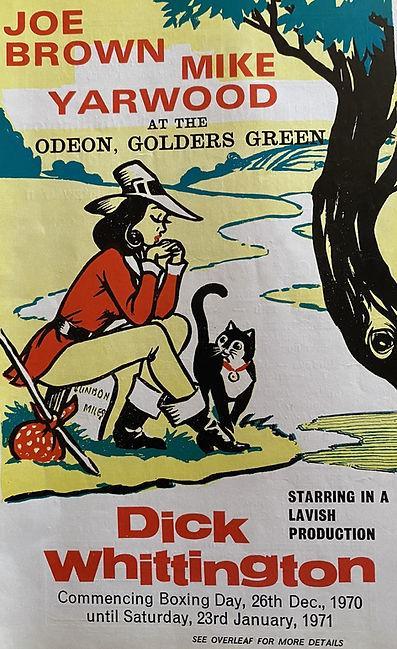
Fig 16: 1970s poster of Dick Whittington
Dan Leno
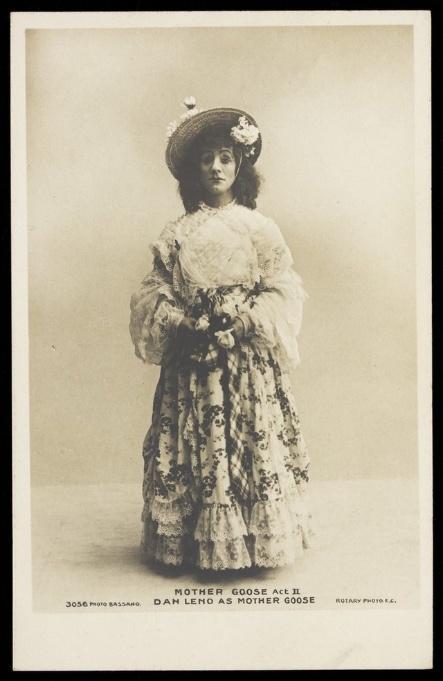

Pantomime Dames are a popular part of panto. Sometimes being the main character over the leading lady, for example, Mother Goose. They are always comedic roles, with their masculinity a part of the gag, with overexaggerated costumes, hair and makeup. Most dames share characteristics of being jolly and aloof. Almost always they would despair over their useless sons, normally the Buttons of the panto, who is comedic through physical comedy, and always flirt with the villain of the panto, if they are male, or male audience members. The main gag of the pantomime dame is that it would be laughable for a man to be flirting with other men. Men playing women’s parts was not uncommon due to the ban on women in theatre from 1350 to 1660, and then even as women were allowed on stage, gender-switched roles still remained as women began to play Breeches roles.
Dan Leno was known as the original Dame, known amongst music halls and the role of Mother Goose written specifically for him.
Leno was a musical hall comedian during the 1880s and was known for dressing as elaborate costumes and acting out characters that related with the people of the time and topical issues. Dan took advantage of his fame and was one of the first people to sell merchandise, with mugs, postcards and inkwells being well sought after at the peak of his fame.
By 1898 Leno began to notice the rising popularity of comic strips and began talks with Sir Cyril Arthur Pearson, an up and coming newspaper owner, who had began to play with serialised story. Pearson then went on to found the publishing company C. Arthur Pearson, known for the Daily Express which still runs today. After talks between the two, Leno agreed upon an appearance in Pearson’s The Big Budget, which has been running since 1897, where two slapstick characters, Airy Alf and Bouncing Billy, interviewed Leno at the panto. Leno then went on to publish his own newspaper under C. Arthur Pearson titled Dan Leno’s Comic Journal. This paper was centred about Leno himself and was written by Leno and then illustrated by well known artists, many of who were known for their work on The Big Budget. The paper was made up of recurring recognisable characters, themed pages, slogans and a section dedicated to fresh jokes. There were also always ads for cycling and Leno had noted that people in the south of London enjoyed cycling around the area and was attempting to capitalise on this.
Fig 17: Dan Leno as Mother Goose 1902-1903
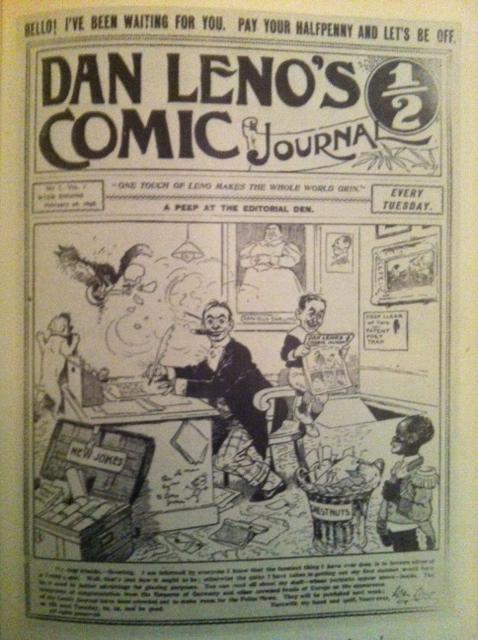

The paper only ran for one year but that wasn’t down to unpopularity, the first issue having sold 350000 copies. It is thought that this short run was due to Leno’s lack of interest, already moving onto the next thing. Which seemed true as weeks later he started to play Dame Trot in Jack and the Beanstalk.
Leno died at the age of 43, with his cause of death declared as “General paralysis of the insane” which stood for the contraction of Syphilis.
Dan Leno was remembered for his showmanship across music halls and his work in pantomime and comedy.
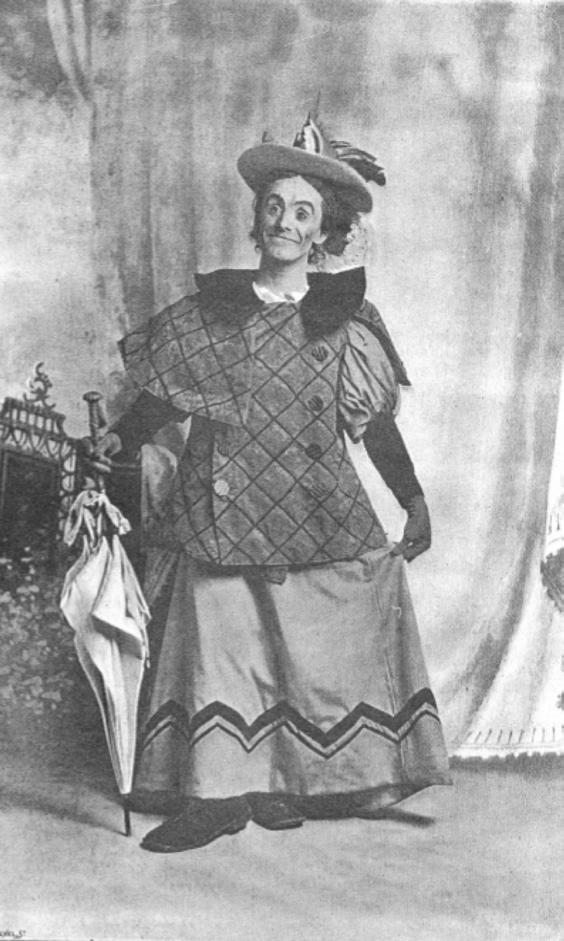
Fig 19: Dan Leno as a Dame 1896
Fig 18: Dan Leno’s Journal February 26th, 1898
Commedia dell’arte
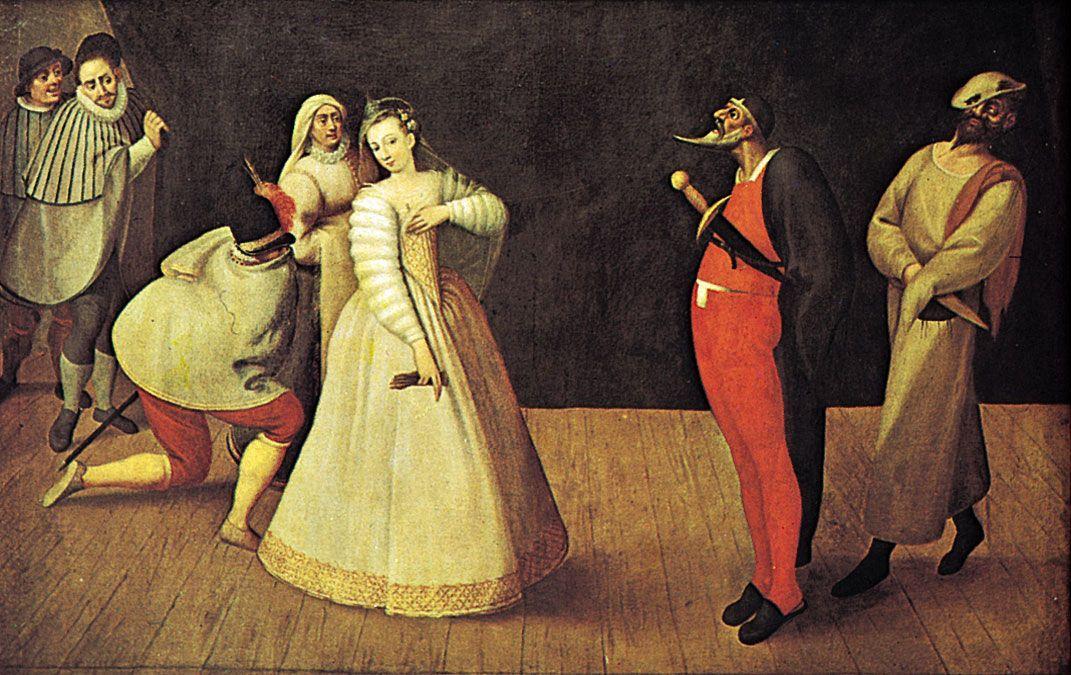
Commedia dell’arte emerged from northern Italy during the Renaissance. The name commedia dell’arte translates to play of professional artists, which sets them apart from amateur dramatics and from commedia erudita, academic comedy, which is adapted directly from classic Roman works for upper-class audiences.
Most commedia companies were made up of ten performers, seven men and three women, but could be as few as eight and as many as twelve. Most troupes were made up of families, with members all related to each other. The groups would travel from town to town, performing in various spaces, from town squares and outdoor theatres to the homes of royal merchants and royal courts. During this time, troupes were known for their comedic work. However, they sometimes performed serious pieces. One of the defining features of commedia was that most of the dialogue was improvised based upon the scenarios they had been given to guide the plot. To make things easier for actors they played the same characters for most of their careers, which helped their characterisation. As well as this to keep performances on track there were standard entrance and exit speeches that were repeated for each performance. Prepared jokes and musical performances were also repeated throughout performances. For example: Lazzo of the Straw, where a rich character would pour himself a glass of wine and that glass would then be drained by his servant using a straw. Another being Lazzo of Nightfall had the entire cast stumbling around stage as if they were in the pitch dark.
A popular performance at the time was of the Innamorati, a pair of young lovers being kept apart by their miserly older fathers. The two receive help from their servants and are able to be together by the end of the show. This show takes inspiration from the Roman comedy of Plautus and Terrance, however, commedia added a modern twist for European audiences. As time went on and commedia bled into different countries commedia changed and became something new, and these new things overtook commedia and it fell out of popularity.
In modern times commedia is only performed by troupes wanting to pay historical homage, not because it is popular.

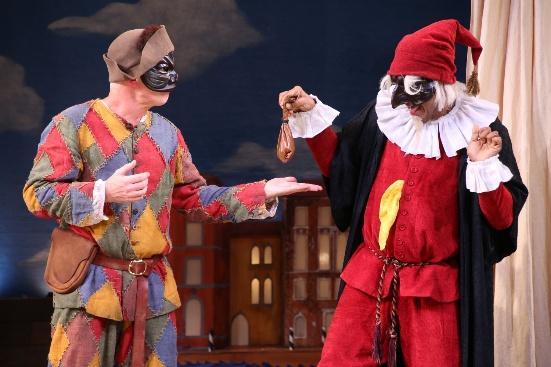
Fig 20: Painting of Commedia dell’art troupe - 1580
Fig 21: Steven Epp and Allen Gilmore in The Servant of
Harlequin
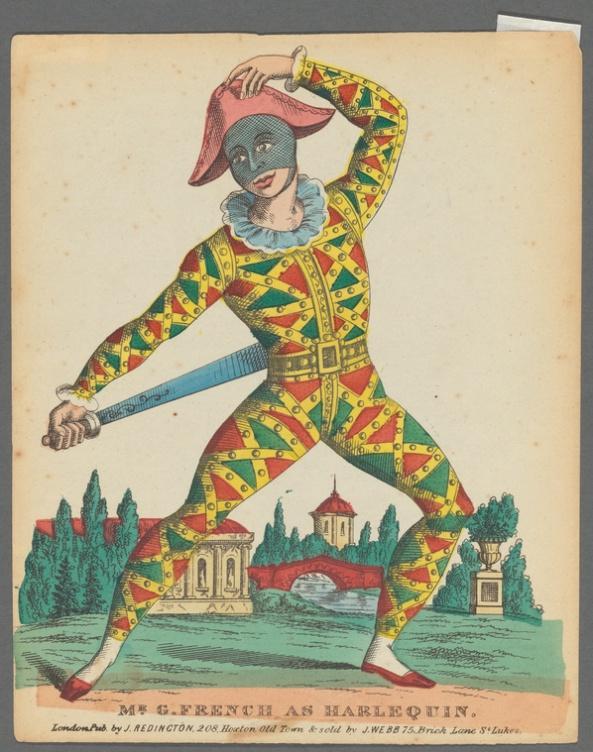
Harlequin is a part of the principal group of stock characters and is considered the most popular by audiences. Harlequin is one of the Zanni, servants, and started off in the mid-16th century with the characteristics of being cowardly, superstitious, and constantly without food and money. His costume comprised his recognisable mask, commonly made of black or tan leather, and a peasant shirt, covered in colourful patches, and long trousers. It is suggested that he was made to represent black slaves.
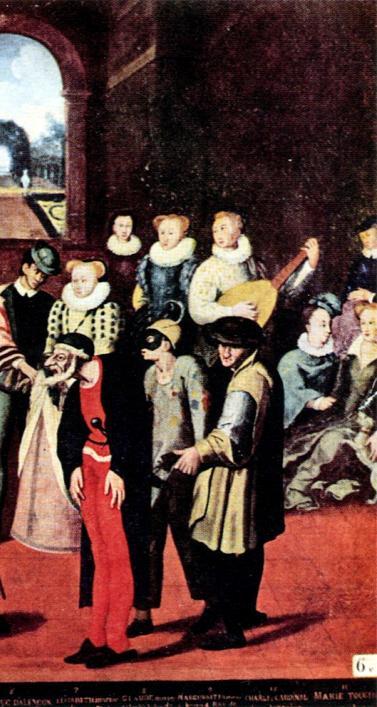

By the beginning of the 17th century, after commedia had come to Britain and Harlequin began to gain popularity, his characteristics changed to make him more noble and likeable. He was still a servant but had changed to the more specific position of valet, which oversaw and dealt with the personal affairs of his master and laying out his clothes for the day. He had become faithful, patient, credulous and amorous; unlike the other Zanni, he didn’t hold a grudge or take revenge on others. His costume also changed to reflect his popularity. His costume became a tight-fitting costume of brightly coloured triangles and diamonds, and his mask changed to seem more mischievous and cat-like. He also carried a baton or slapstick to hit other characters with, from which the comedic term was coined from.
Harlequin is known for his acrobatics; many actions were accompanied by a cartwheel or flip. His grace was accentuated by his way of crossing the stage, instead of a usual walk he moves with a three-step ballet form with his left foot leading to where he is going.
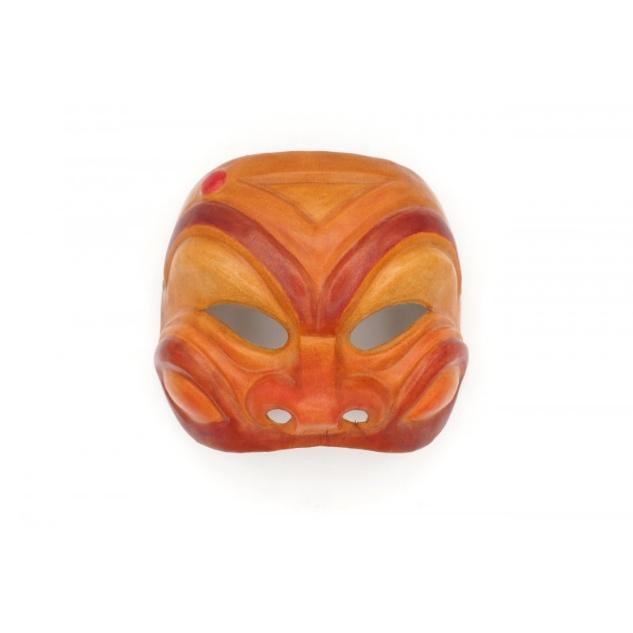
Fig 24: Harlequin’s more popular mask
Fig 22: Drawing Depicting Mr G. French as Harlequin
Fig 23: Oldest Depiction of Harlequin, Displaying his Original Costume
Pantalone
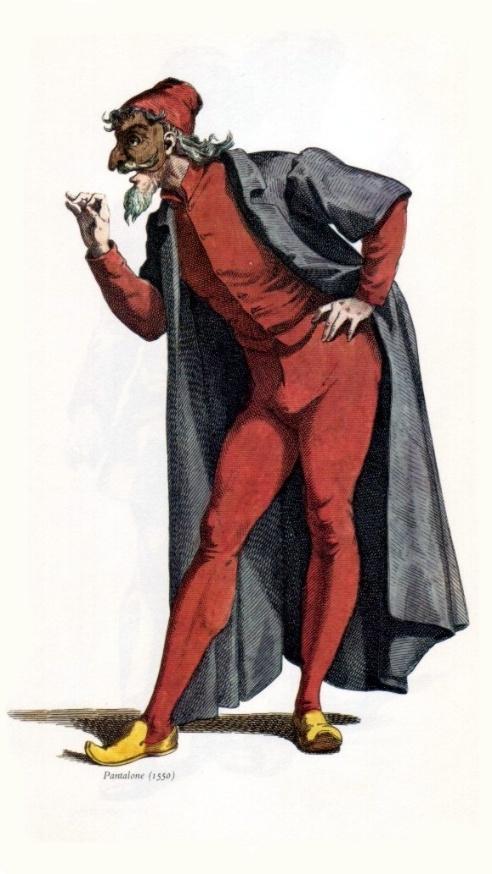
Pantalone is a part of the principal group of stock characters. While not the most popular, he is the oldest documented stock character. He is commonly the catalyst of most Zanni and Vecchio performances, his first action of the play setting the rest of the characters off to their actions.
Pantalone is one of the Vecchio, villains, and his characteristics have stayed consistent, greedy, arrogant and cowardly. Pantalone’s main role in plays are to be a foil and obstacle to the other characters, being a counterpart to Harlequin and an obstacle to the lovers. In plays with the lovers he is normally cast as a parent to one of the lovers and is desperate to keep them apart.
Pantalone is dressed a tight fitted vest, long coat, red breeches and stockings, of which wouldn’t have been in fashion since the middle ages. In plays later into the 17th century he is sometimes dressed in pantaloons. He also wears a recognisable mask with a hooked nose, long grey facial hair, normally thick eyebrows, and a goatee.
Pantalone’s movement is normally quite stiff and formal with wide facing forward hips and moves in long strides. While his steps are stiff, Pantalone’s hands are swift and graceful, moving when he talks, articulating his speech. As well as this having Pantalone’s hands swift allows him to defend himself if needed as while his bent back and stiff steps suggest frailty in his old age, Pantalone is constantly watchful and sly.

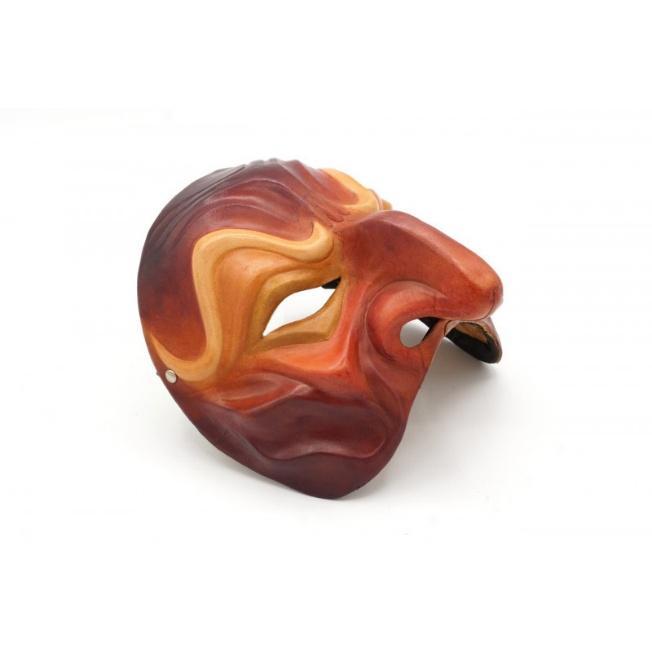
Fig 25: Depiction of Pantalone
Fig 26: Pantalone Mask
Columbina
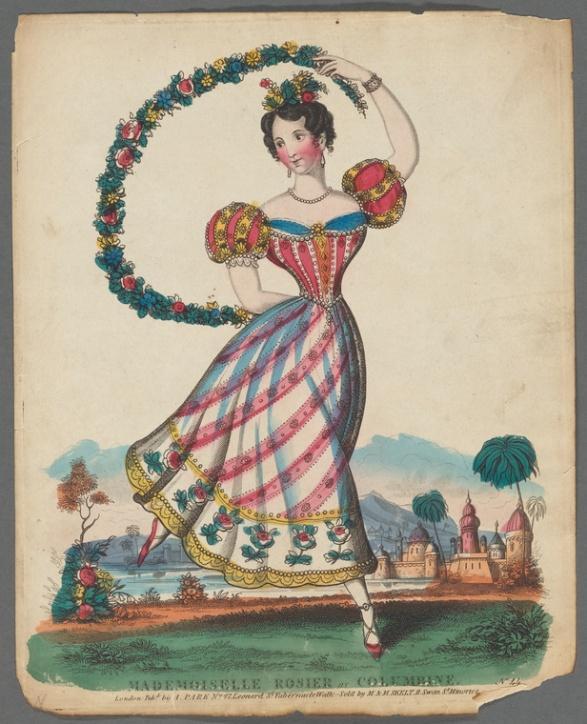
Columbina is introduced in the 17th century and is a part of a subgroup of Zanni, known as Soubrette, maids. Her characteristics are love, vanity and sauciness. Columbina is commonly unfunny and instead is the straight man in most productions, and is sometimes the only person on stage using intellect and helps other characters out of their unusual situations.
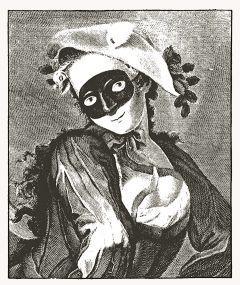

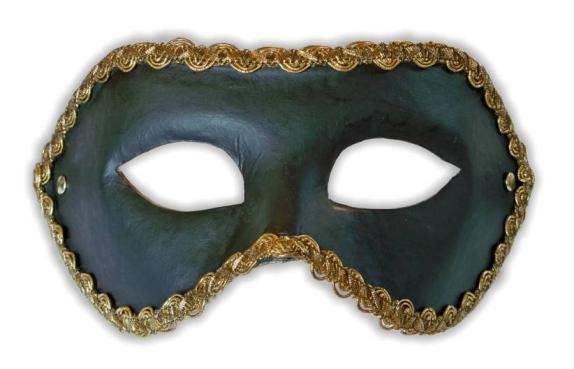
Columbina is also commonly paired with Harlequin as his love interest, and as such her costume normally matches his with bright colours and diamonds or triangles of colour.
From the 17th century to the end of the 18th century Columbina’s style of dress matched what was popular at that time, however, in the 19th century, Columbia's fashion froze and stayed in the trends of the 18th century. She doesn’t normally wear a mask due to her vanity but does wear heavy makeup and wearing a mask would obscure that. However, in some productions she wears a small domino mask instead.
Columbina walks with what is known as the ‘Grand Zanni’ walk, which involves knees bent and the body’s centre of gravity lowered. This walk is commonly seen when a Zanni is attempting to cross the stage without being seen or he wants to get himself out of a difficult situation. However, Columbina adds a flick of her foot at the end of her walk and her stance only has one knee bent, the other leg stuck out with a slight tilt of the hips. Once again showing her vain characteristic as this stance shows off her body.
Fig 27: Mademoiselle Rosier as Columbina
Fig 28: Depiction of Columbina in her Alternate Mask
Fig 29: Columbina’s Alternate Mask
Innamorati
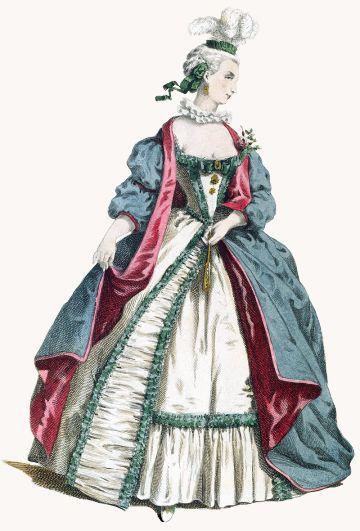
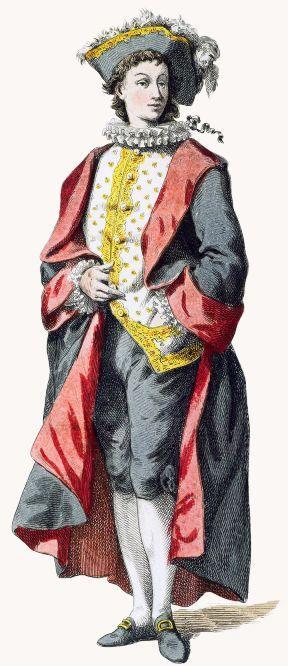
The Immorati, also known as the lovers, are a group of stock characters during a production. The female of the lovers is know as Inamorata, and the male Inamorato. There are not two specific characters that fill the role of the lovers, and it will change to fit the show's plot. The two are what leads the show, as plot devices, rather than actual characters. Normally they are the children of two elder characters, normally Pantalone and one other.
The two will recite poetry from memory and sing often. Their lines will also be filled with flamboyancy and extreme rhetoric, so they are often not taken seriously by their fellow characters or the audience. However, their love for each other is always serious
Like Columbina the two would be dressed the popular trends of the time for the rich and upper class in matching colours, to cement the two are meant for each other. Then, in the 18th century, the lovers began to be put in more theatrical costumes, dressed like lovers in Shakespeare's productions, which were popular at the time.
The lovers don’t wear masks, instead applying a lot of makeup and putting on beauty marks.
The lovers move in an almost floaty movement with puffed chests and pointed toes, moving across the stage without making any heavy steps. Their hand movements and gestures also move in an airy way, with grand sweeping motions that match the motions of their feet.

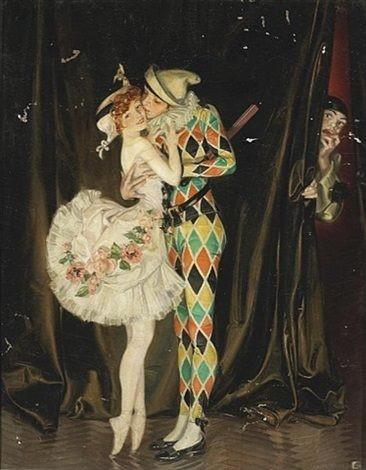
Fig 30: Etchings of the lovers Silvia and Lelio from 1726
Fig 31: Harlequin and Columbina as the lovers

Mother Goose – Outfit 1


Mother



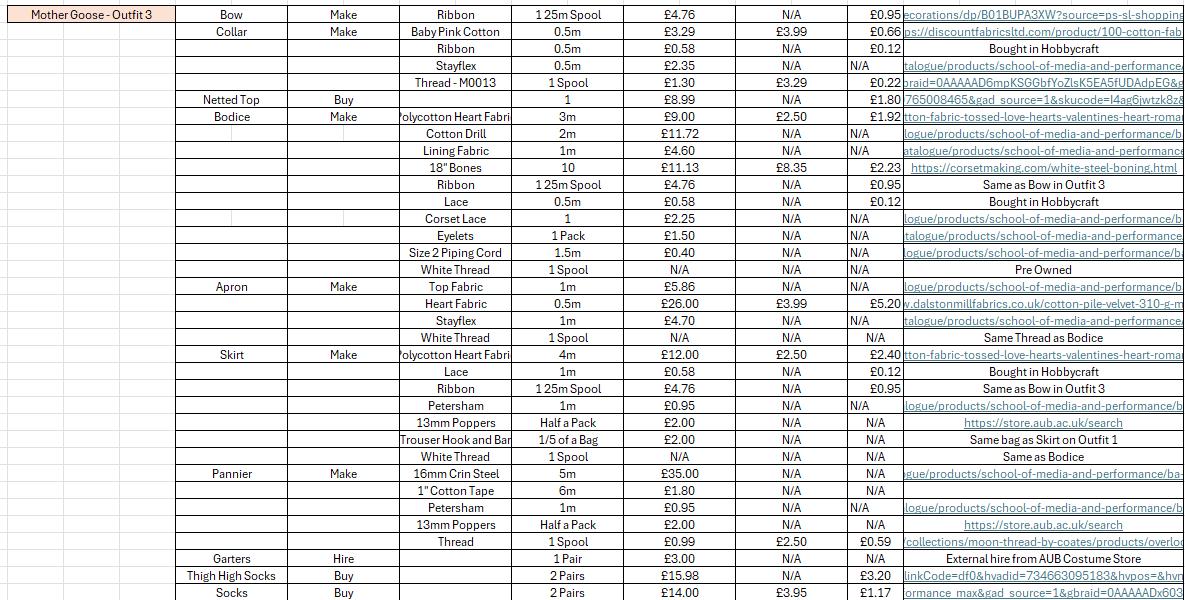

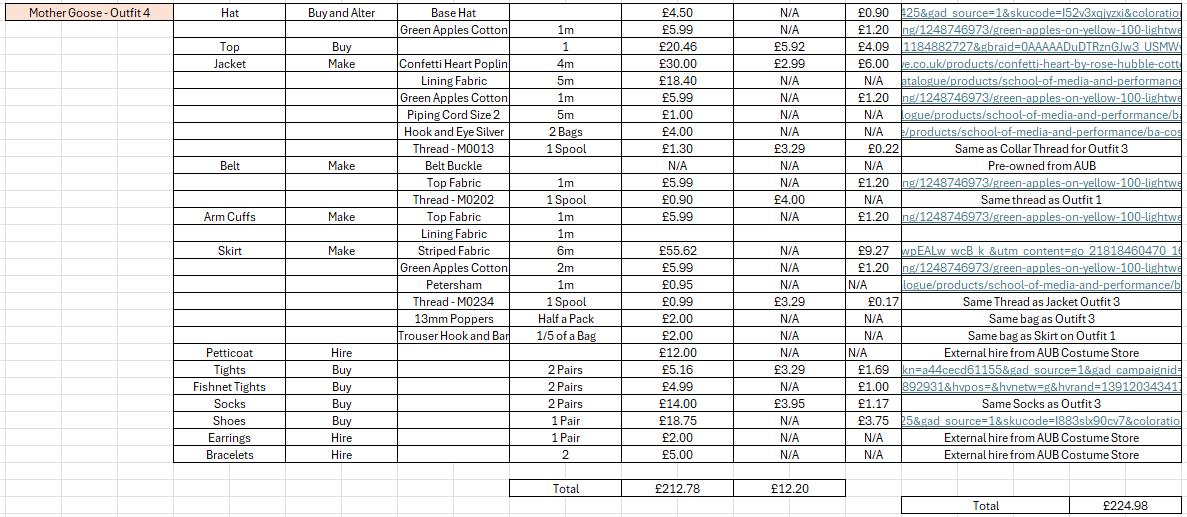
Discordo


Lord de Fois Gras


Fortuna


Hattie the Housekeeper



CharactersDesigns, Make Breakdowns and Costume Breakdowns
Mother Goose – Costume 1
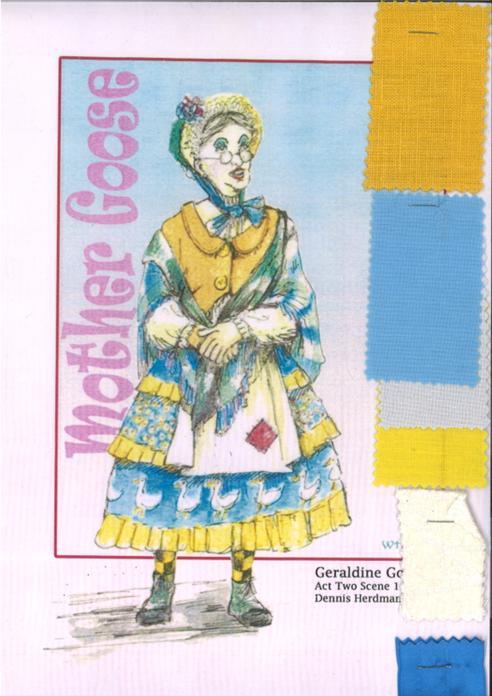

Fig 32: Mother Goose Outfit 1 Costume Design
Make Breakdown
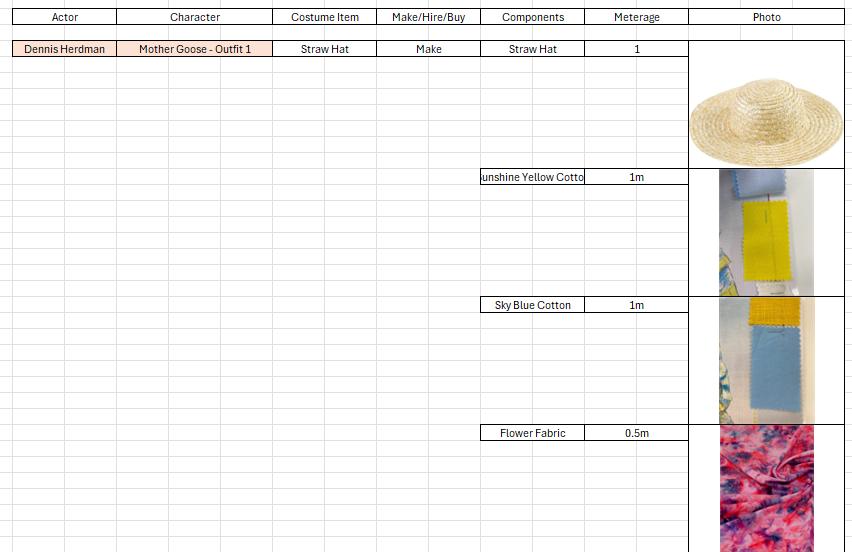
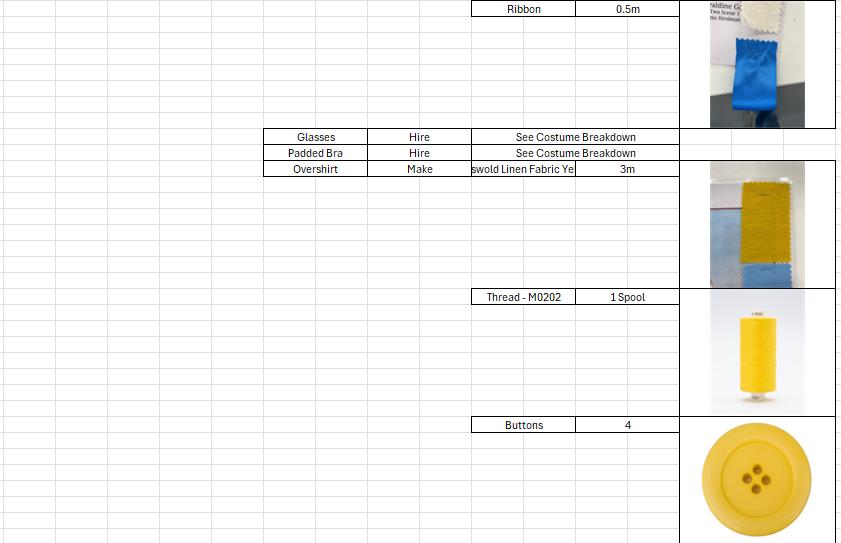



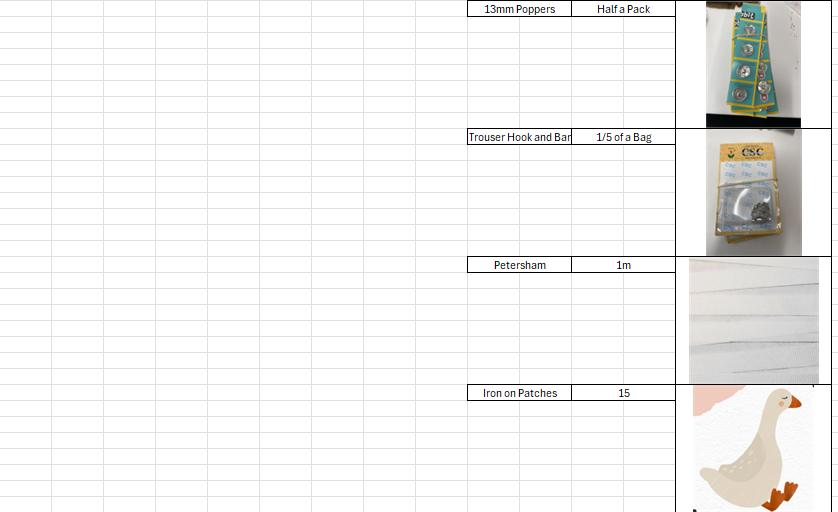

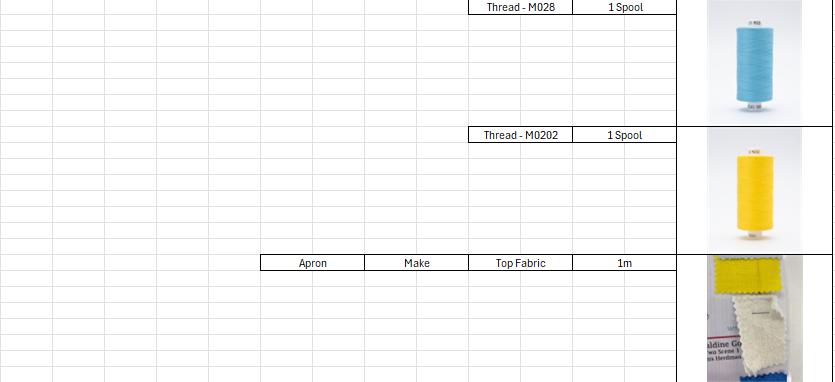


Costume Breakdown
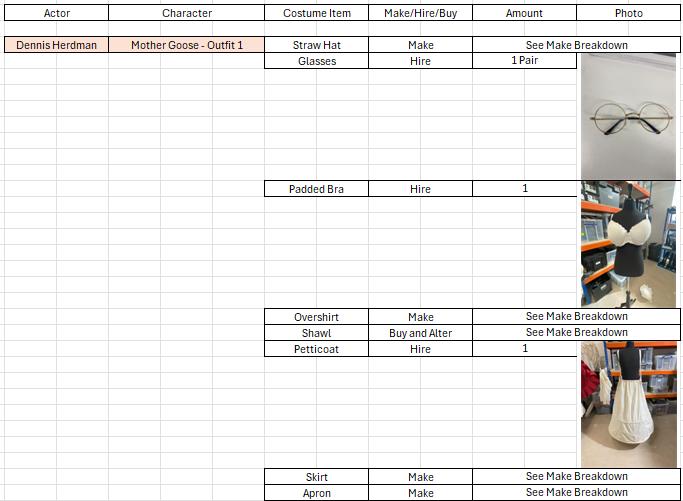


Mother Goose – Costume 2
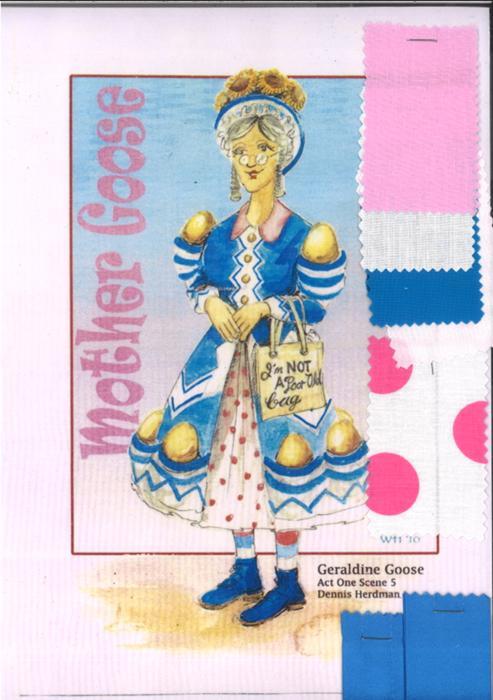

Fig 33: Mother Goose Outfit 2 Costume Design
Make Breakdown

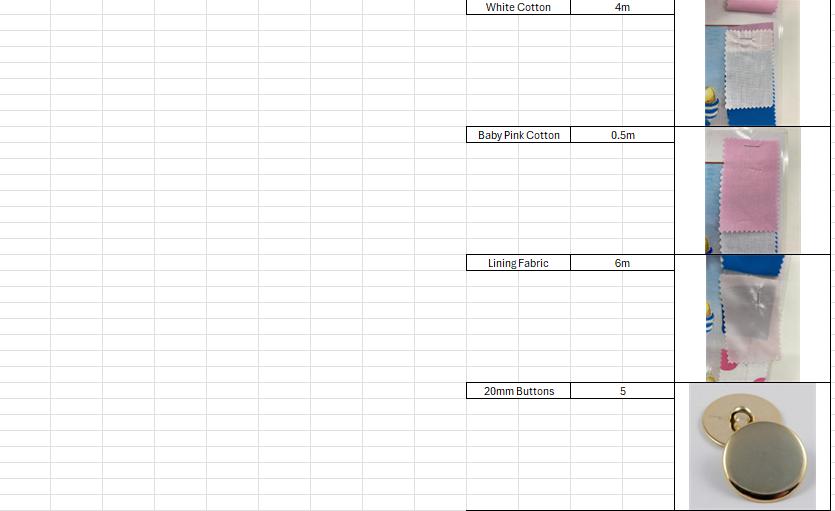




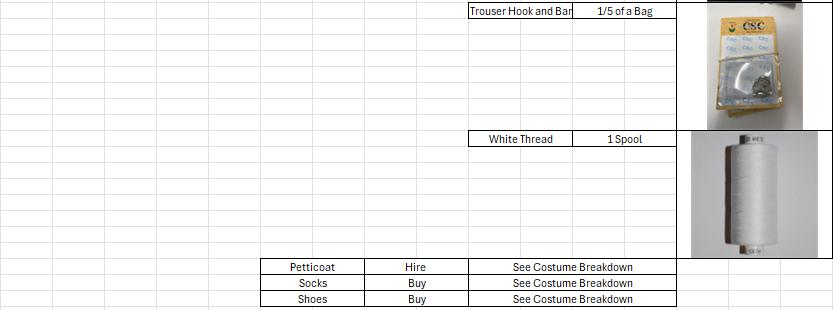

Costume Breakdown
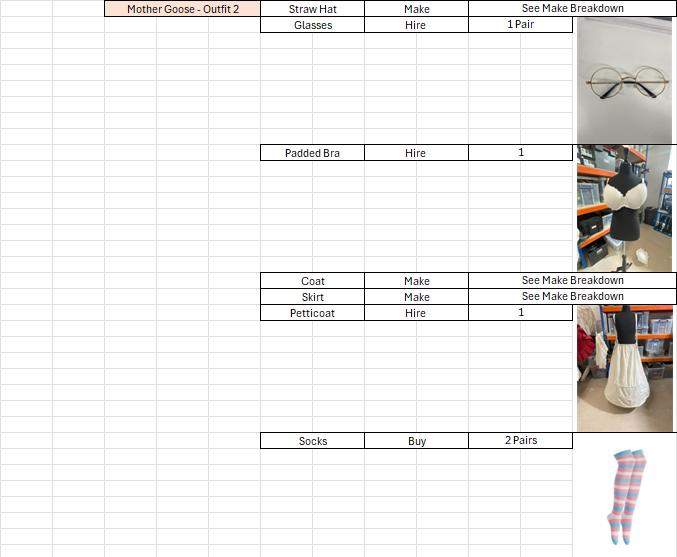


Mother Goose – Costume 3
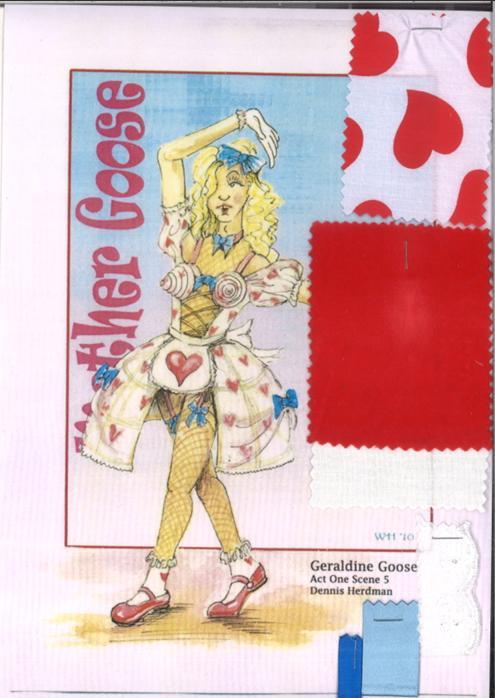

Fig 34: Mother Goose Outfit 3 Costume Design
Make Breakdown
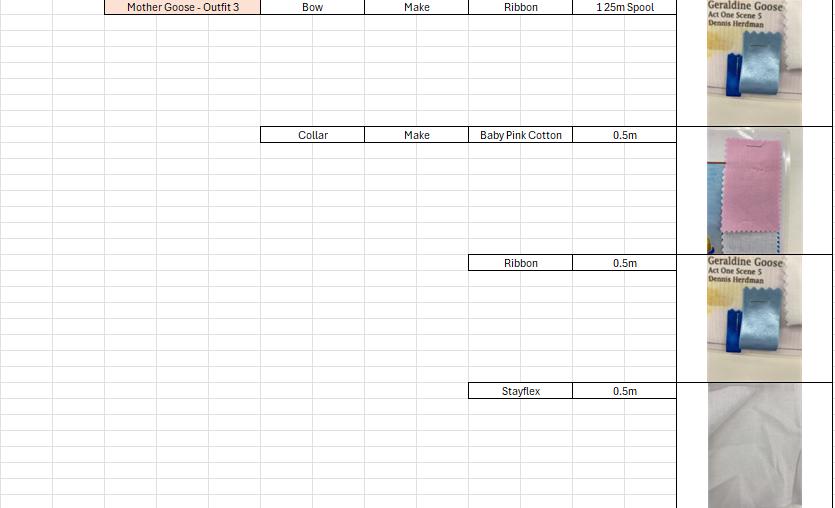



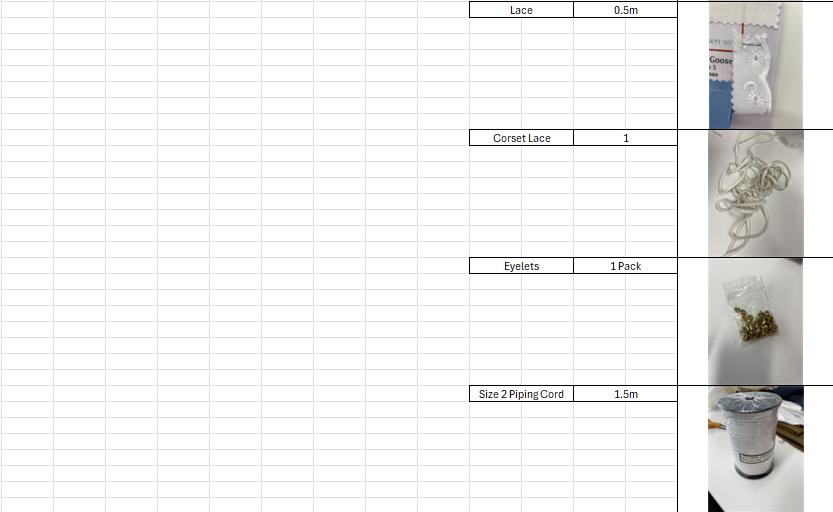
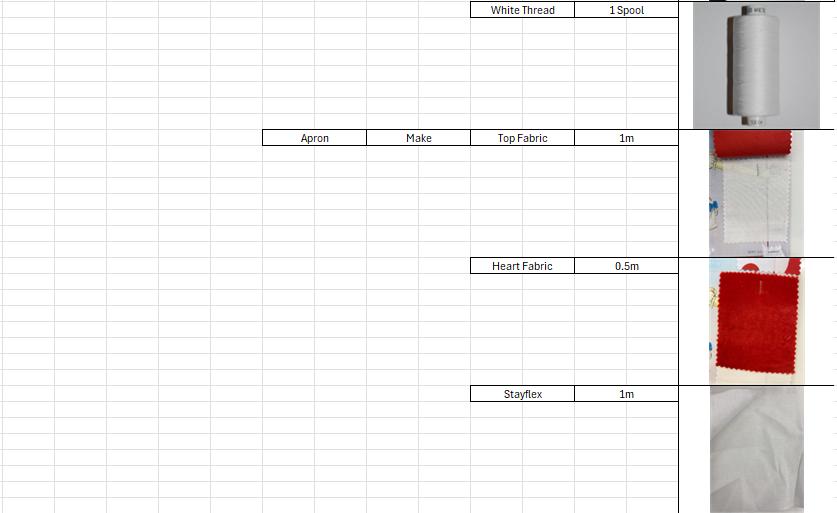


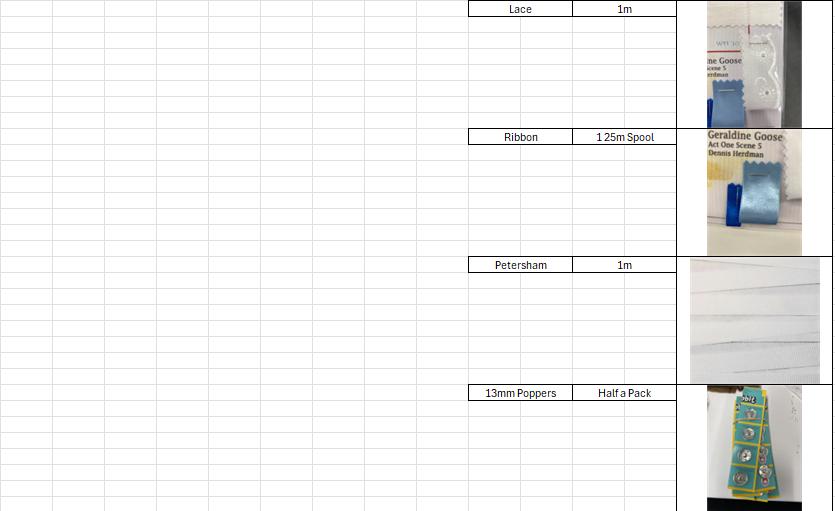
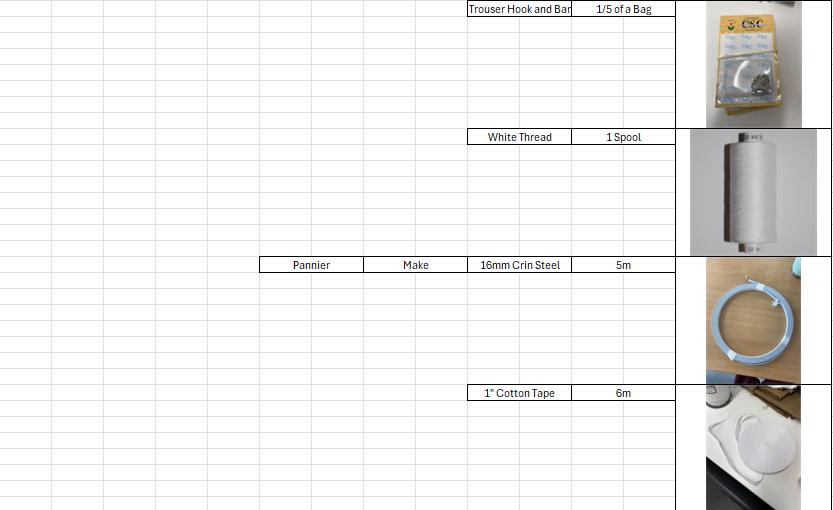



Costume Breakdown
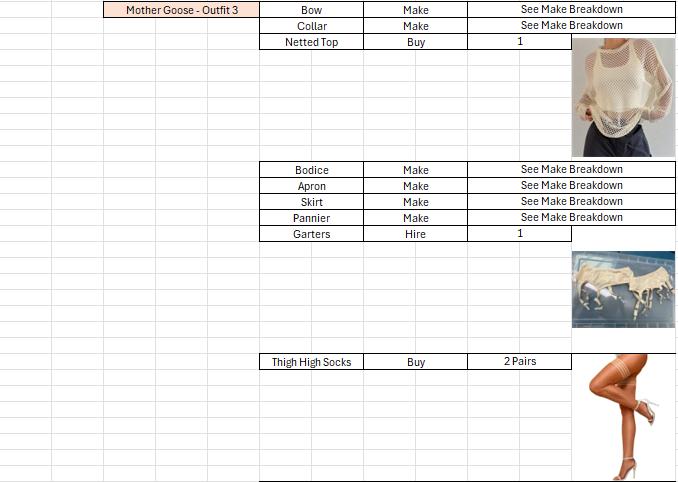


Mother Goose – Costume 4
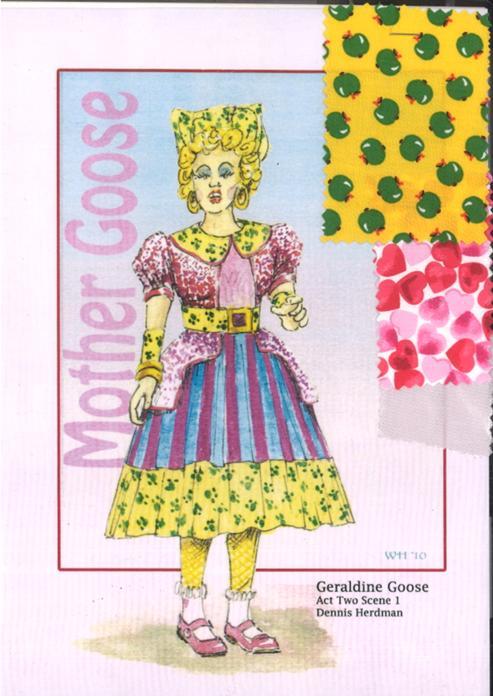

Fig 35: Mother Goose Outfit 1 Costume Design
Make Breakdown
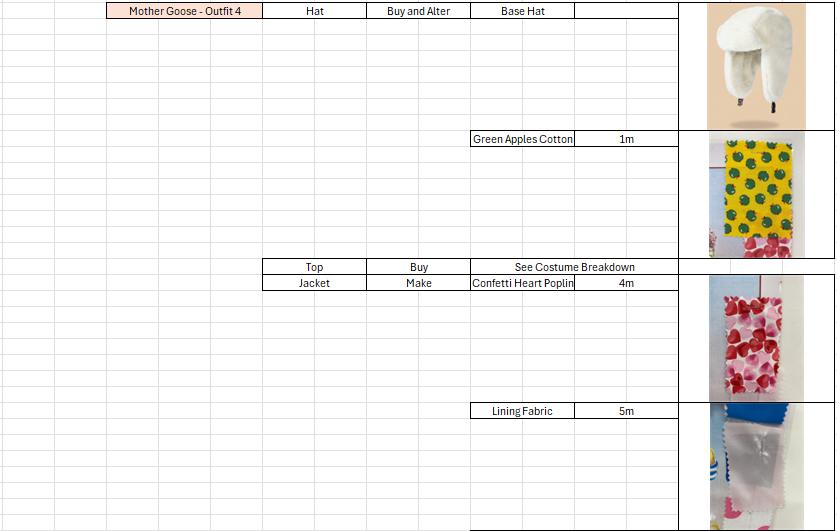
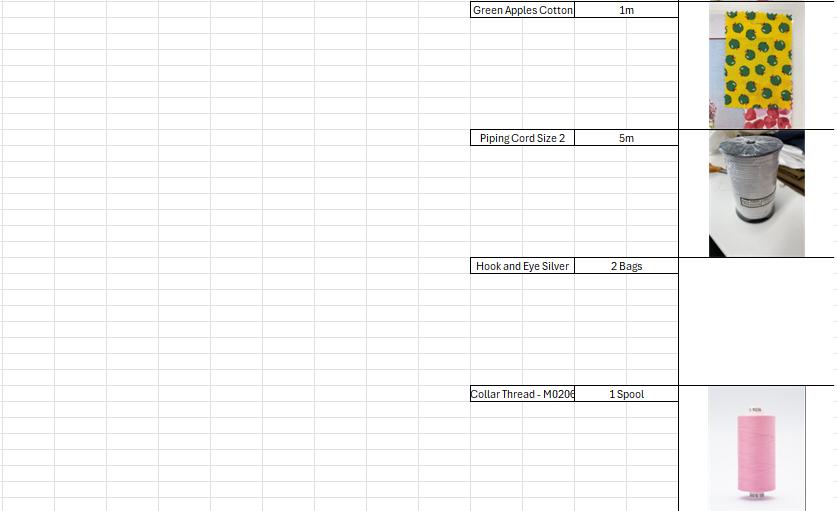


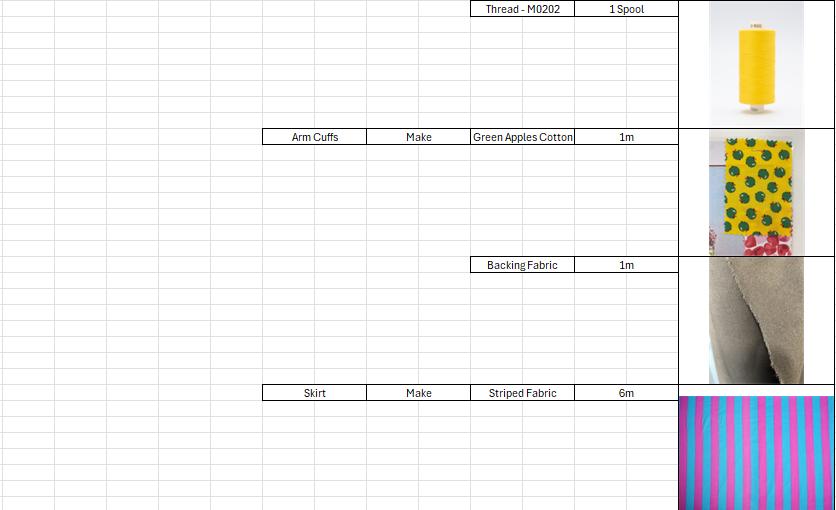
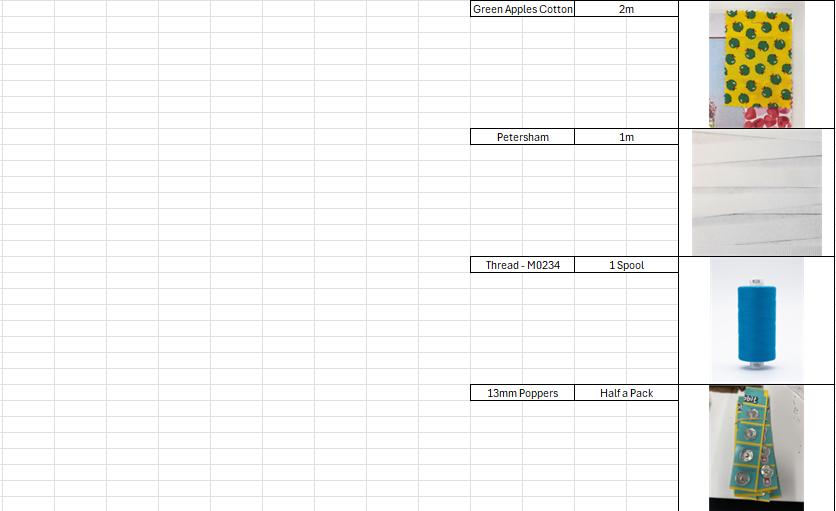


Costume Breakdown
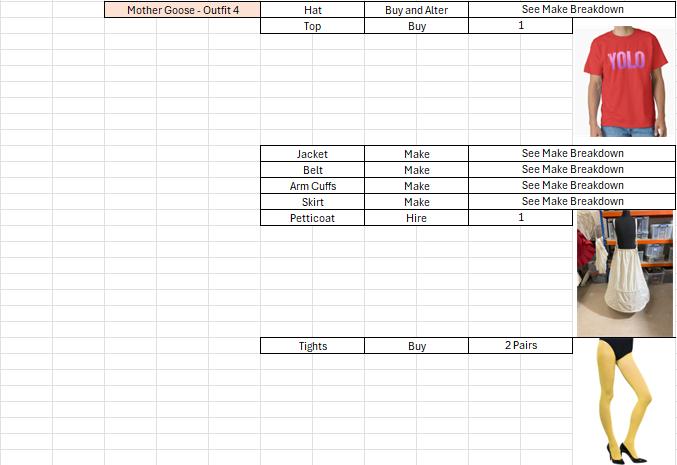



Discordo
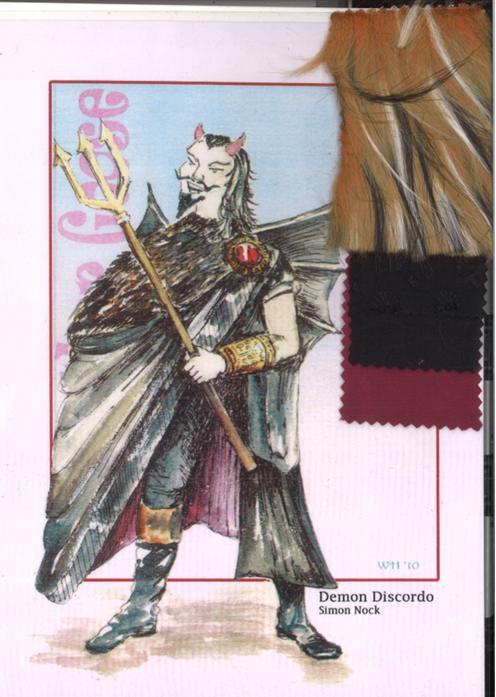

Fig 36: Discordo Costume Design
Make Breakdown
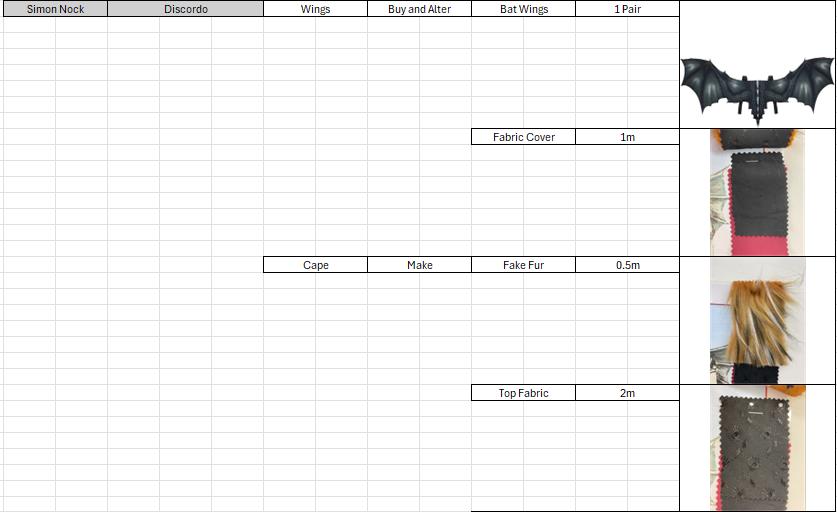
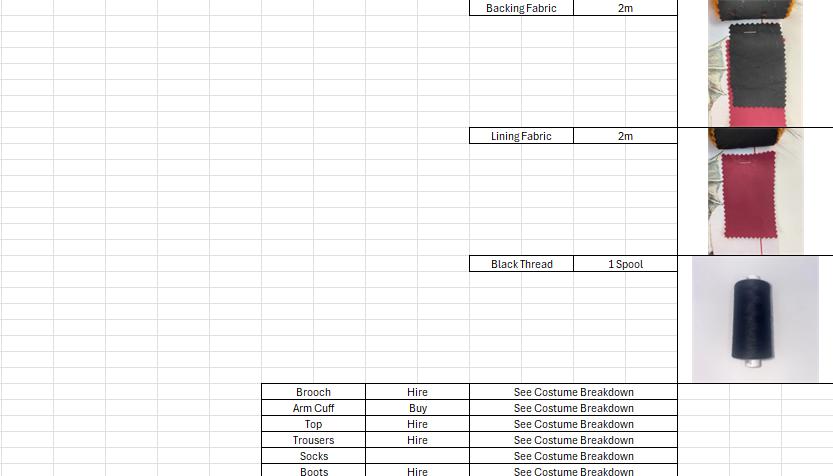

Costume Breakdown
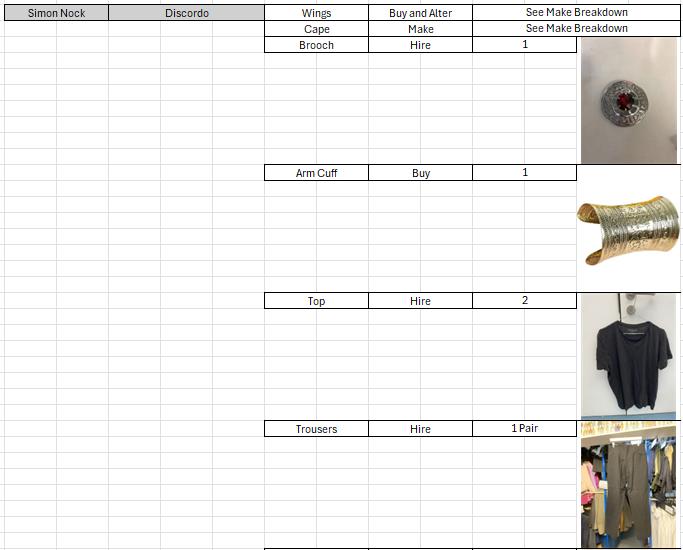


Lord de Fois Gras
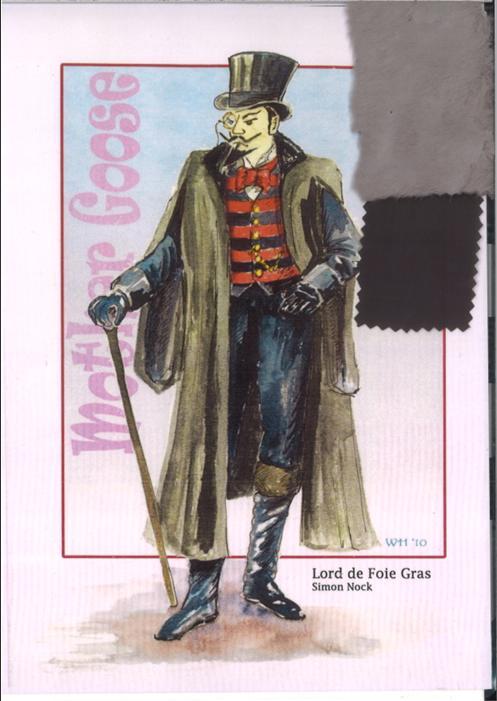

Fig 37: Lord de Fois Gras Costume Design
Make Breakdown
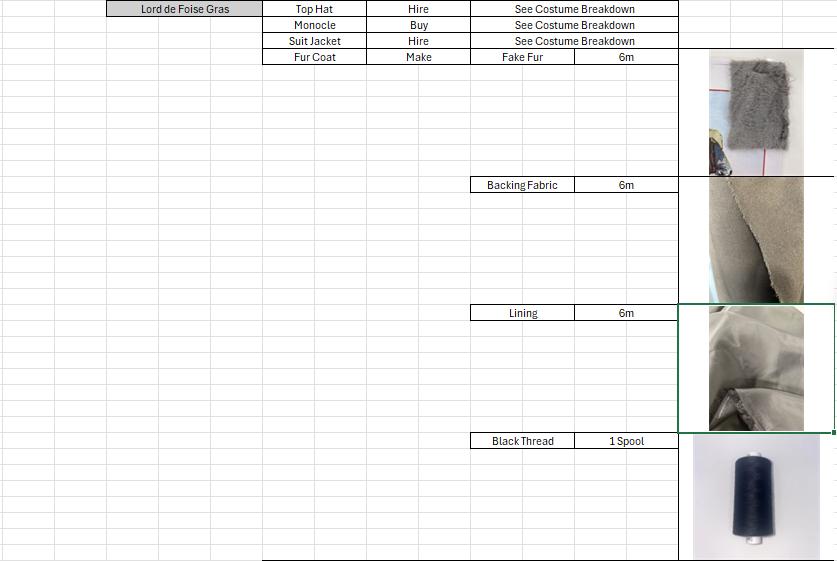


Costume Breakdown
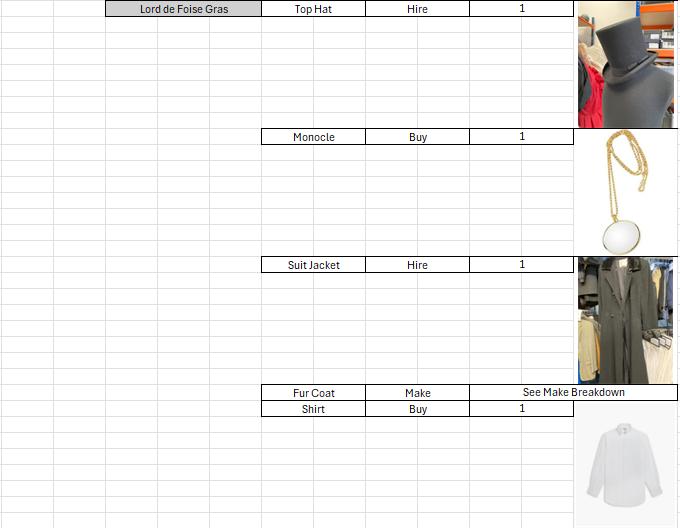
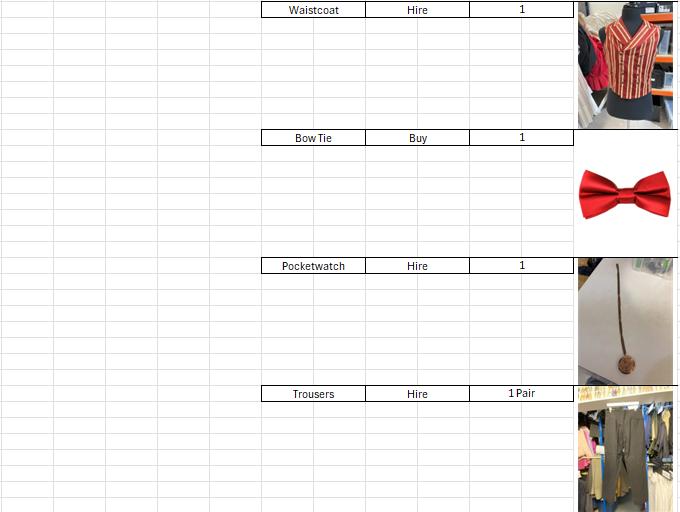




Fortuna
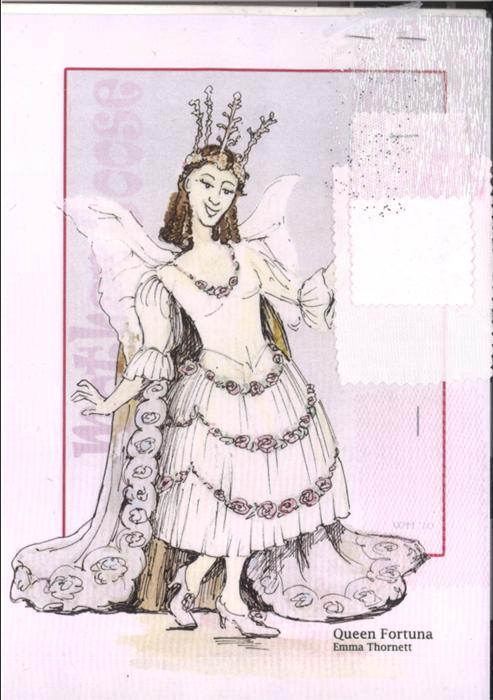

Fig 38: Fortuna Costume Design
Make Breakdown
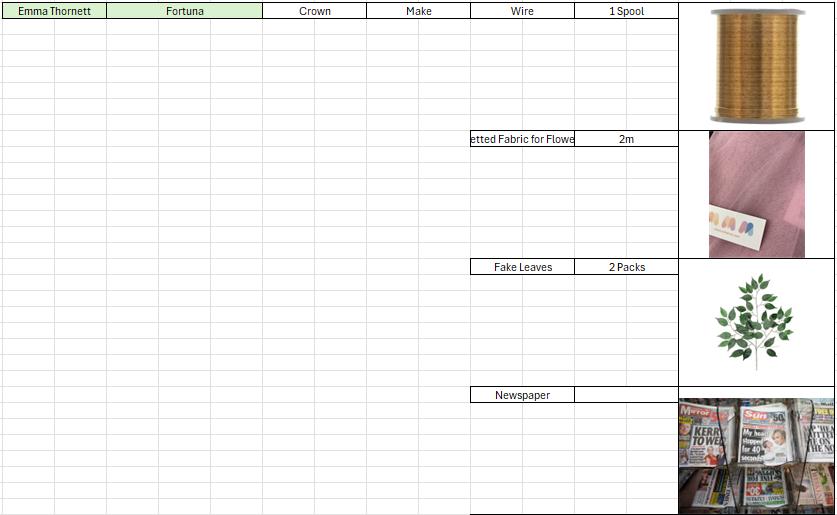
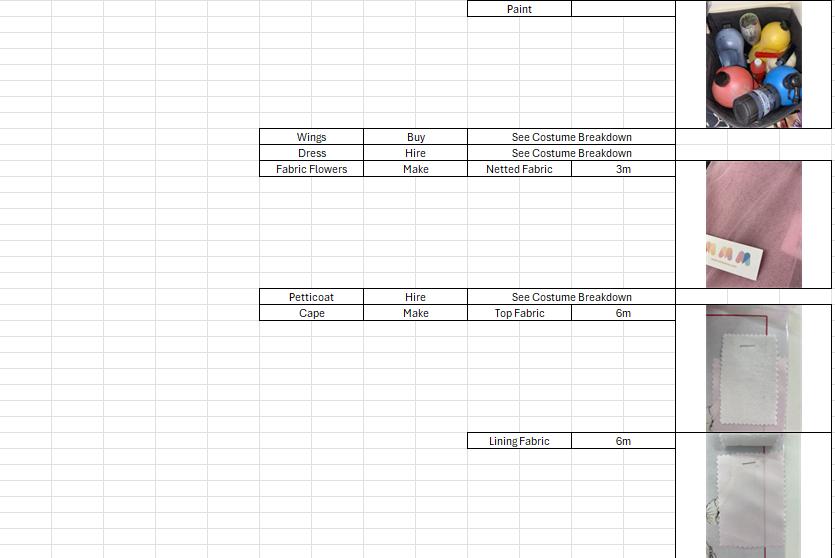


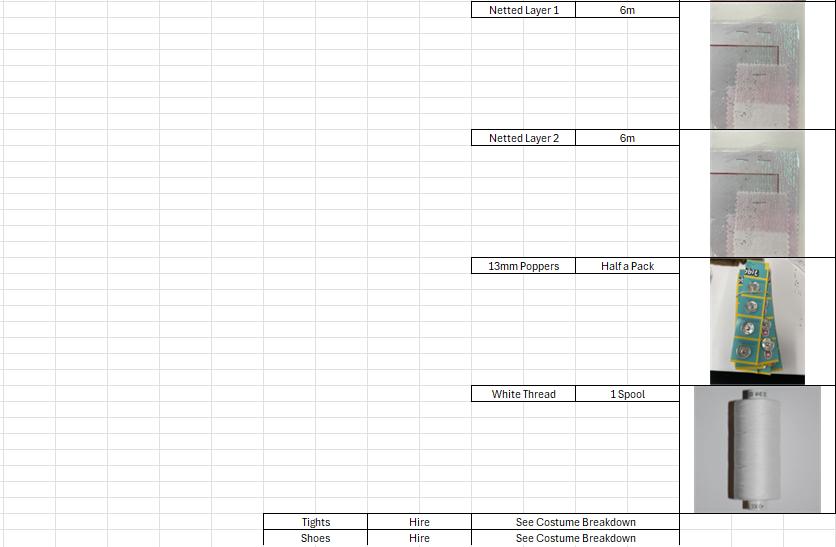

Costume Breakdown
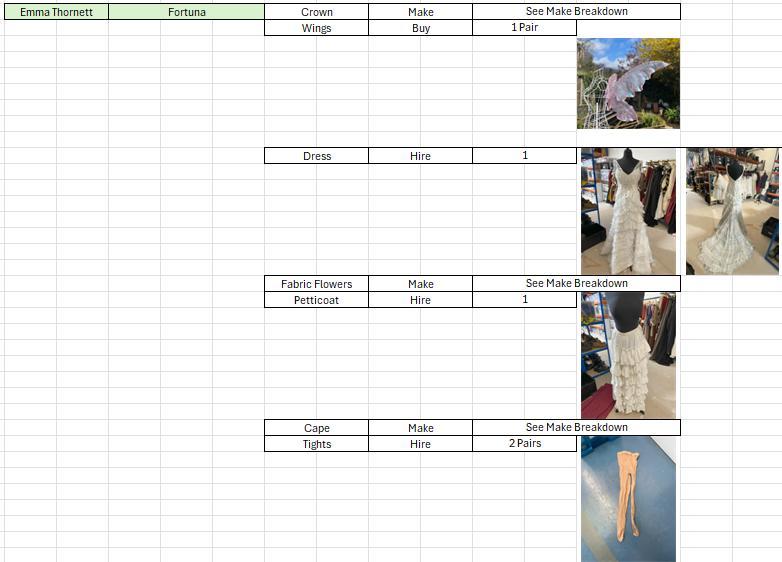


Hattie


Fig 39: Housekeeper Hattie Costume Design
Make Breakdown
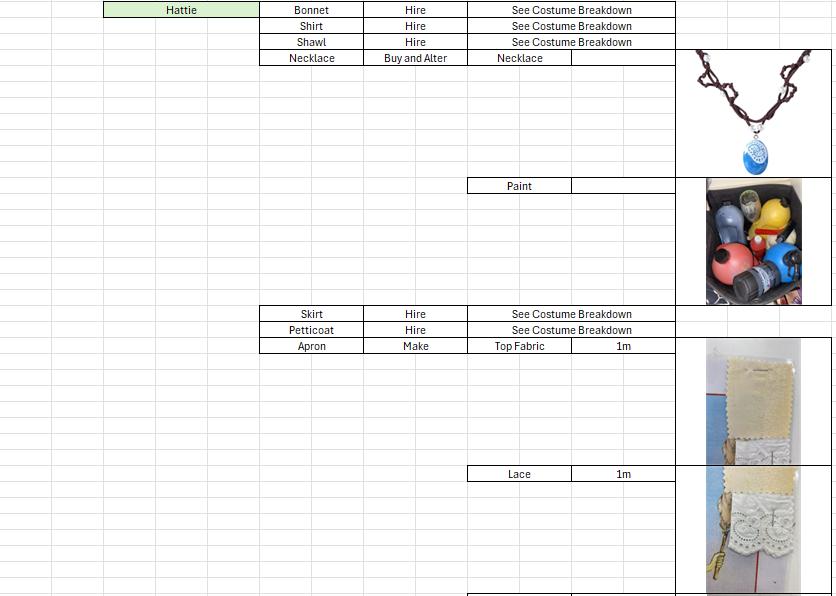


Costume Breakdown
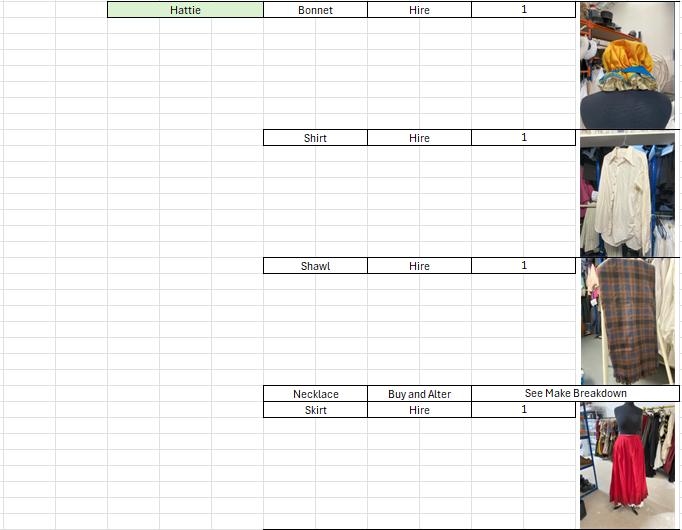
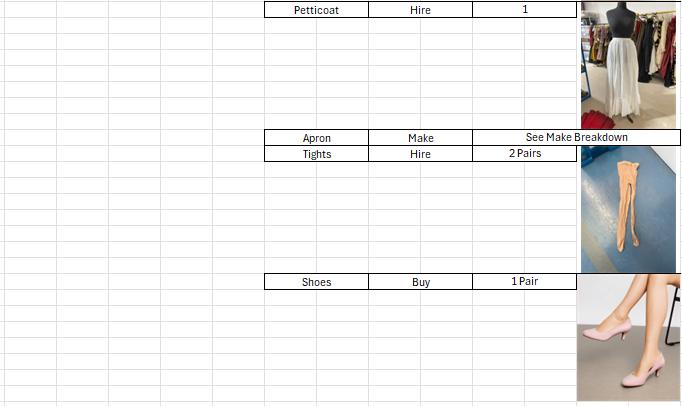


Hire Form



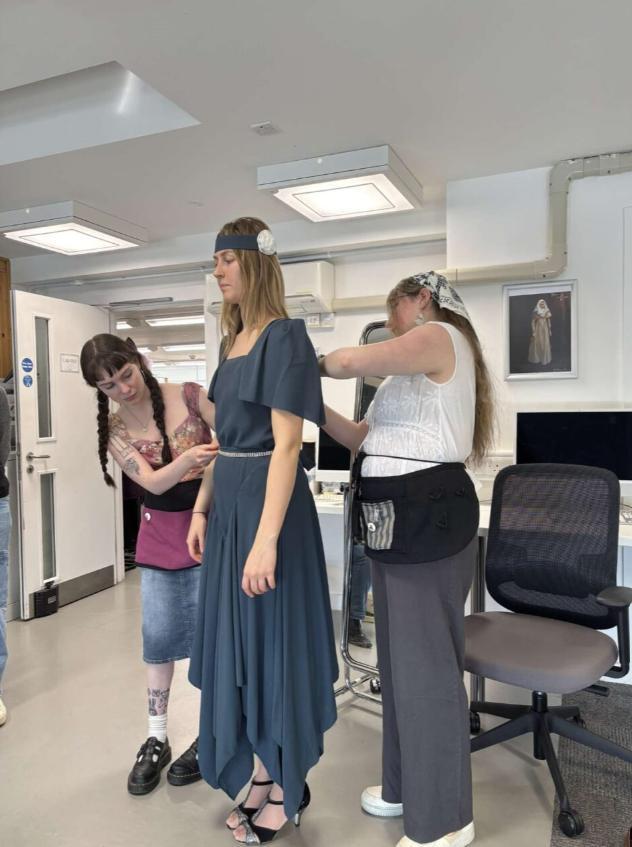
On Friday 9th May, I took notes for the third fitting for This Happy Breed. I enjoy taking notes for fittings as I find the process interesting and relatively easy. As I wasn’t working on This Happy Breed, it was fun to see the wide range of sourced costumes for the show; I was also impressed by the wide variety of costumes that had to be undertaken and organised by the Supervisors and Head of Running Wardrobe. I have taken notes for fittings for my own shows in the past and enjoyed it then too, as I find it a low stress way to be involved in fittings and hope to be involved in fittings in the future.

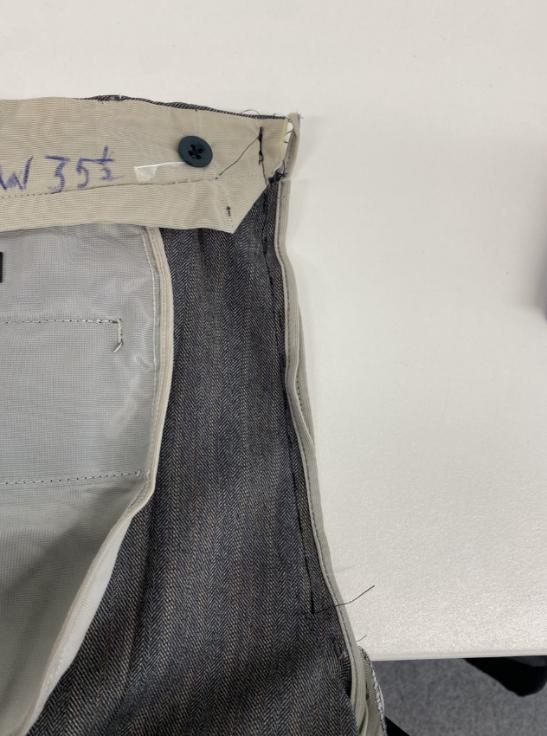
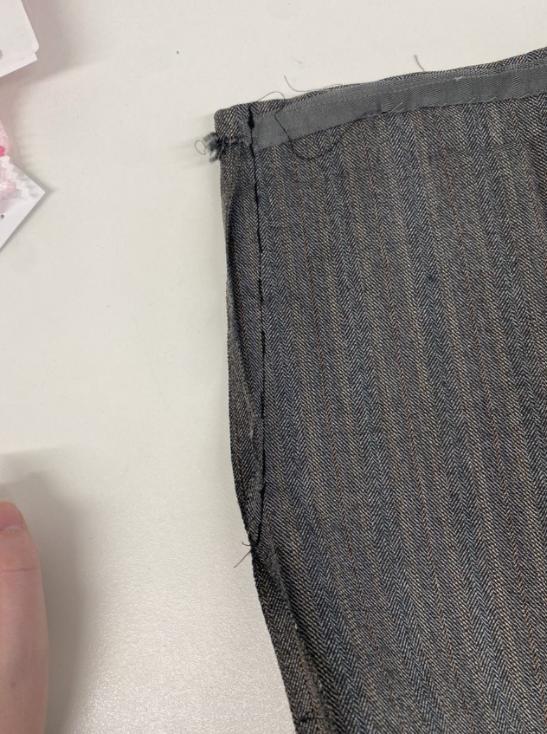
Fig 40: This Happy Breed 3rd Fitting
Figs 41-42: Front and Back of Taken in Waistband
As well as this I altered two pairs of trousers for pre-assessment, bringing in the waist and tacking the hem up on a pair, and cuffing the hems of another pair with a slipstitch. I enjoyed this process as I found the sewing relatively easy and quick. While making isn’t something I plan to do in my future career, minor alterations are something I can expect from supervision and running a wardrobe, so staying up to date with my skills is useful.

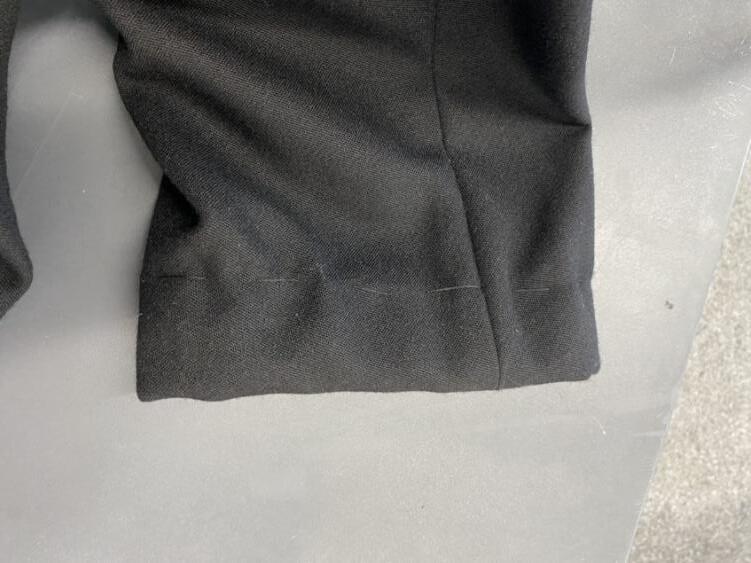
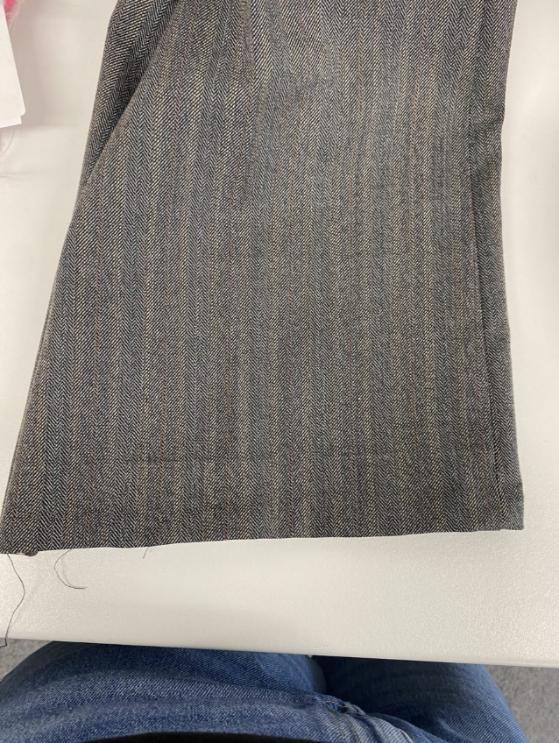
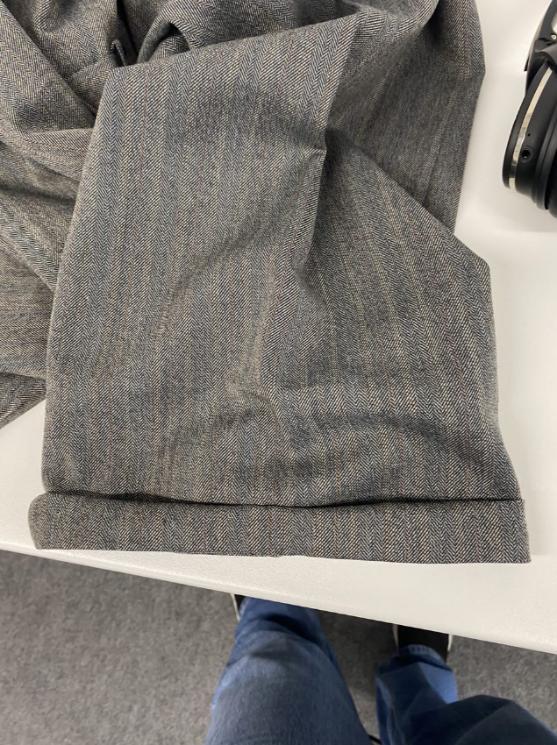
Fig 43: Tacked Trouser Hem
Figs 44-45: Cuffed Trouser Hem

Bibliography
Bassano Ltd (1902). Dan Leno as Mother Goose. [Photograph].
Blogs.bl.uk. (2016). Dan Leno: the original Pantomime Dame. [online] Available at: https://blogs.bl.uk/english-and-drama/2016/10/dan-leno-the-original-pantomimedame.html.

Chilton, M. and Domenico Pietropaolo (2001). Harlequin unmasked : the commedia dell’arte and porcelain sculpture. New Haven, Conn.: Yale Univ. Press, C. Crocker, B. (2024). The History of Pantomime | Pantomime Resources - Ben Crocker Pantomimes. [online] Ben Crocker Panto. Available at: https://www.bencrockerpantomimes.com/post/the-history-of-pantomime.
Encyclopedia Britannica (2018). commedia dell’arte | History, Characters, & Facts.
In: Encyclopædia Britannica. [online] Available at: https://www.britannica.com/art/commedia-dellarte.
Exeunt Magazine. (n.d.). Pantomime: A Whistlestop History, Through The Eyes of Its Detractors. [online] Available at: https://exeuntmagazine.com/features/pantomime-awhistlestop-history-through-the-eyes-of-its-detractors/ Frow, G. (1985). ‘Oh, Yes it Is’! London : British Broadcasting Corporation.
Italiancarnival.com. (2025). Commedia dell’Arte: Commedia Characters and Masks | History | Actors. [online] Available at: https://www.italiancarnival.com/php/commedia-artecharacters.php.
Learning Through Theatre. (n.d.). History of the Commedia dell’Arte. [online] Available at: https://learningthroughtheatre.co.uk/history-of-the-commedia-dellarte.
Lewis, R. (2019). Mime and pantomime | visual art. In: Encyclopædia Britannica. [online] Available at: https://www.britannica.com/art/mime-and-pantomime.
NYPL Digital Collections. (n.d.). Mademoiselle Rosier as Columbine. [online] Available at: https://digitalcollections.nypl.org/items/84d1d160-05db-0135-69e4-011b21a99686.
pantoarchive. (2016). 1970 pantomime handbills. [online] Available at: https://www.pantoarchive.com/1970 [Accessed 29 May 2025].
Queer Kernow. (n.d.). Pantomime and Drag. [online] Available at: https://queerkernow.co.uk/pantomime-dames/.
Richards, J. (2015). The golden age of pantomime : slapstick, spectacle and subversion in Victorian England. London: I.B. Tauris & Co. Ltd.
Salburg, D. (n.d.). Once upon a pantomime. Luton: Cortney.
Schacker, J. (2012). Fairy Gold: The Economics and Erotics of Fairy-Tale Pantomime. Marvels & tales, 26(2), pp.151–177. doi:https://doi.org/10.1353/mat.2012.a486587.
Theboar.org. (2025). The Boar. [online] Available at: https://theboar.org/2025/01/readingbetween-the-seams-what-a-drag-the-evolution-of-pantomime-costume-and-characters/.
to, C. (2025). Dan Leno (1860-1904). [online] UK Comics Wiki. Available at: https://ukcomics.fandom.com/wiki/Dan_Leno_(1860-1904) [Accessed 29 May 2025].

Venice Original E-Commerce. (2019). Carnival. [online] Available at: https://www.veniceoriginal.it/en/81-carnival [Accessed 29 May 2025].
Victoria (2025). Mr G. French as Harlequin | V&A Explore The Collections. [online] Victoria and Albert Museum: Explore the Collections. Available at: https://collections.vam.ac.uk/item/O1261388/mr-g-french-as-harlequin-print-redingtonjohn/ [Accessed 29 May 2025].
Victoria and Albert Museum. (2016). The story of pantomime · V&A. [online] Available at: https://www.vam.ac.uk/articles/the-story-ofpantomime?srsltid=AfmBOorH59BDUHyeJK5p0O7bFcO5p1VQv_kitKweNkLJfc_cLq9MWl9K [Accessed 29 May 2025].
Wikimedia.org. (2014). File:A scene from the commedia dell’ arte played in France before a noble audience - Ferrone 2014 fig34.jpg - Wikimedia Commons. [online] Available at: https://commons.wikimedia.org/wiki/File:A_scene_from_the_commedia_dell%27_arte_pla yed_in_France_before_a_noble_audience_-_Ferrone_2014_fig34.jpg.
Wikipedia (2020). Pantalone. [online] Wikipedia. Available at: https://en.wikipedia.org/wiki/Pantalone.
Wikipedia. (2023). Lucia Elizabeth Vestris. [online] Available at: https://en.wikipedia.org/wiki/Lucia_Elizabeth_Vestris.
Wikipedia Contributors (2019). Pantomime. [online] Wikipedia. Available at: https://en.wikipedia.org/wiki/Pantomime.
www.youtube.com. (n.d.). Trailer: THE SERVANT OF TWO MASTERS. [online] Available at: https://www.youtube.com/watch?v=3EObvG6L_7U [Accessed 6 Nov. 2023].

Fig List
Fig 1: Photo by New Theatre Royal Lincoln
Fig 2 – 7:
https://www.facebook.com/NewTheatreRoyalLincoln/posts/pfbid02Ww2Y78rQ8K4xbf5vnpiNUNkFECH5CUD dh8ingn6x2cB9VHJMmY1FseNXm2RS9TCLl
Fig 8: By Fay Wilde

Fig 9: By Victoria Adams
Fig 10: https://www.britannica.com/art/mime-and-pantomime
Fig 11: https://learningthroughtheatre.co.uk/history-of-the-commedia-dellarte
Fig 12: https://www.flickr.com/photos/royaloperahouse/20434850574
Fig 13: https://exeuntmagazine.com/features/pantomime-a-whistlestop-history-through-the-eyes-of-itsdetractors/
Fig 14: https://en.wikipedia.org/wiki/Lucia_Elizabeth_Vestris
Fig 15: https://www.vam.ac.uk/articles/the-story-ofpantomime?srsltid=AfmBOorH59BDUHyeJK5p0O7bFcO5p1VQv_kitKweNkLJfc_cLq9MWl9K
Fig 16: https://www.pantoarchive.com/1970
Fig 17: https://www.npg.org.uk/collections/search/portrait/mw202708/Dan-Leno-as-Mother-Goose
Fig 18: https://ukcomics.fandom.com/wiki/Dan_Leno_(1860-1904)
Fig 19: https://www.researchgate.net/figure/Dan-Leno-as-a-Dame-for-a-1896-portrait-in-The-Sketch-MrDan-Leno-663_fig7_241841520
Fig 20: https://www.britannica.com/art/commedia-dellarte
Fig 21: https://www.youtube.com/watch?v=3EObvG6L_7U
Fig 22: https://collections.vam.ac.uk/item/O1261388/mr-g-french-as-harlequin-print-redington-john/
Fig 23: https://commons.wikimedia.org/wiki/File:A_scene_from_the_commedia_dell%27_arte_played_in_France_ before_a_noble_audience_-_Ferrone_2014_fig34.jpg
Fig 24: https://www.veniceoriginal.it/en/venetian-mask-and-costumes/1111-harlequin-cat-leathercommedia-dell-arte-mask.html
Fig 25: https://en.wikipedia.org/wiki/Pantalone
Fig 26: https://www.veniceoriginal.it/en/venetian-mask-and-costumes/1100-grouchy-pantalone-leathercommedia-dell-arte-mask.html
Fig 27: https://digitalcollections.nypl.org/items/84d1d160-05db-0135-69e4-011b21a99686
Fig 28: https://www.italiancarnival.com/php/commedia-arte-colombina.php
Fig 29: https://dawsona16.wordpress.com/2017/03/31/tartuffe-exploring-commedia-dellarte/
Fig 30: https://www.italiancarnival.com/php/commedia-arte-innamorati.php
Fig 31: https://trademarkantiques.com/blogs/news/pierrot
Fig 32-39: By Will Hargreaves
Fig 40: By Erin Batten
Fig 41-46: By Fay Wilde

